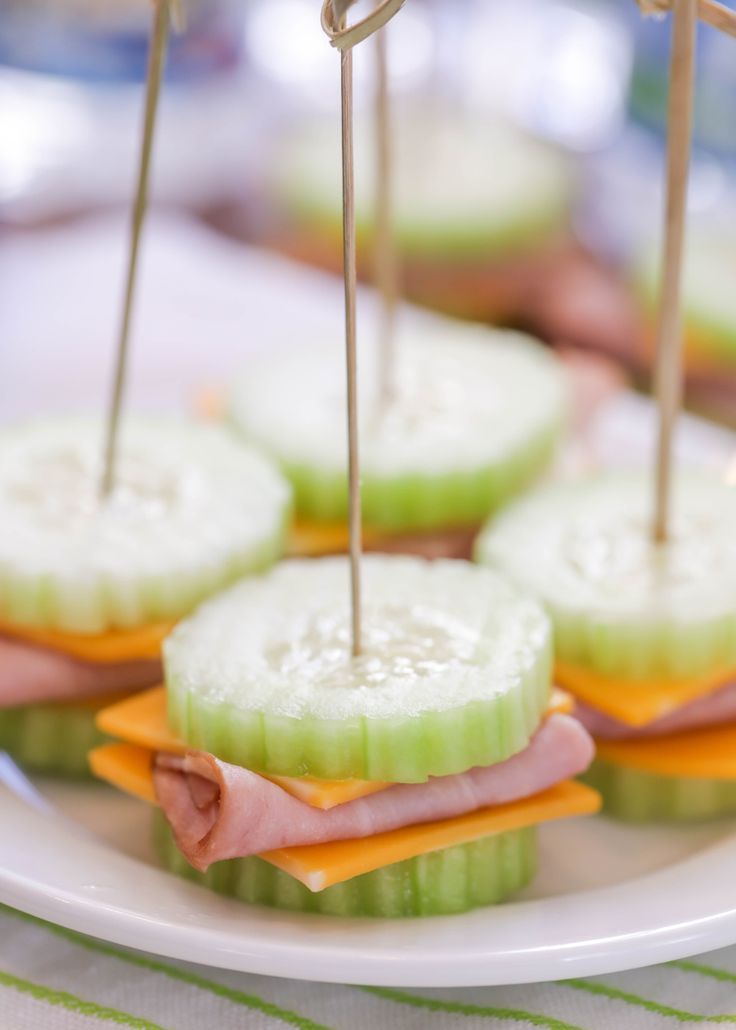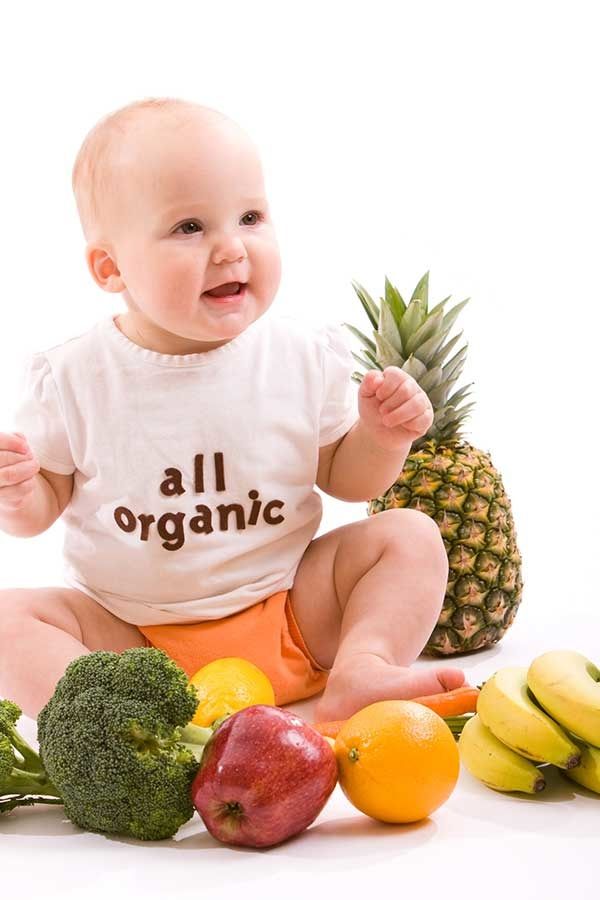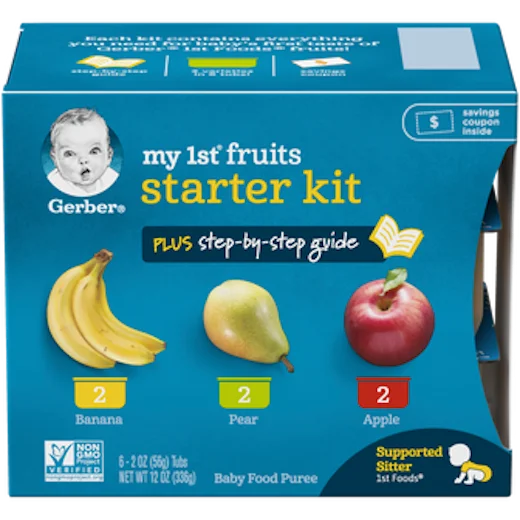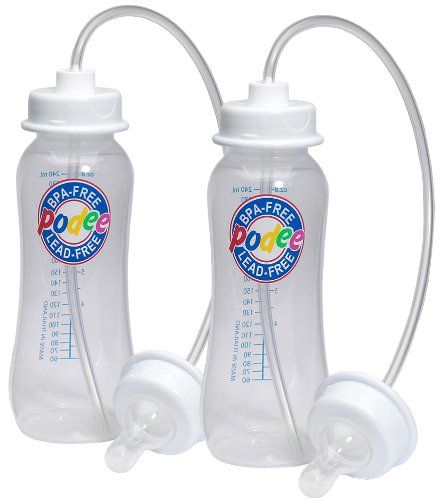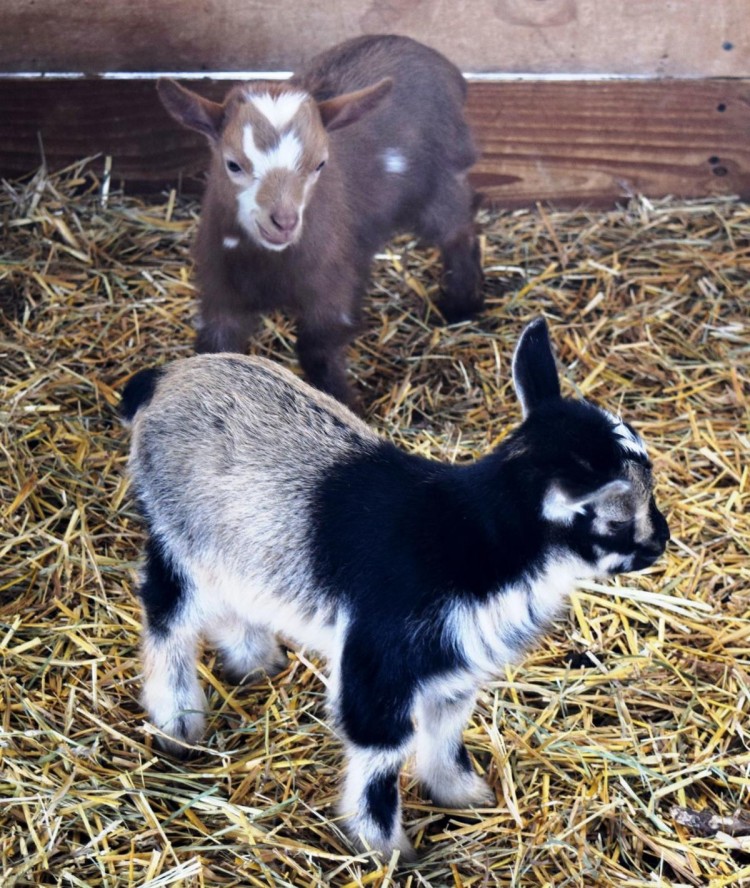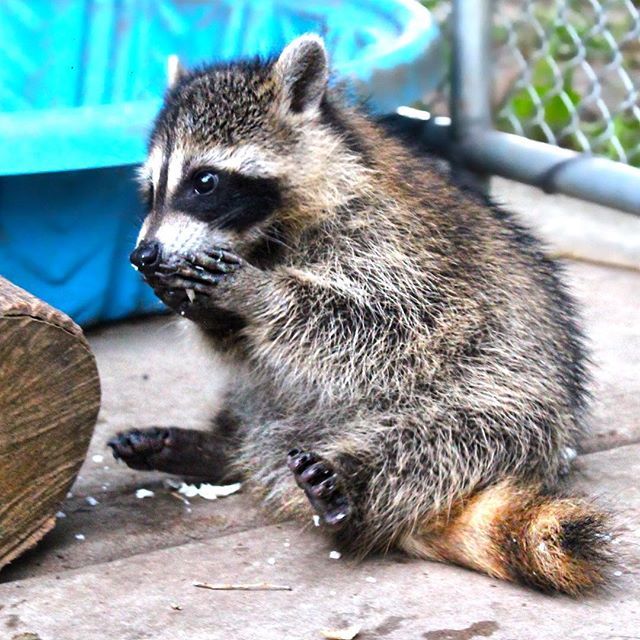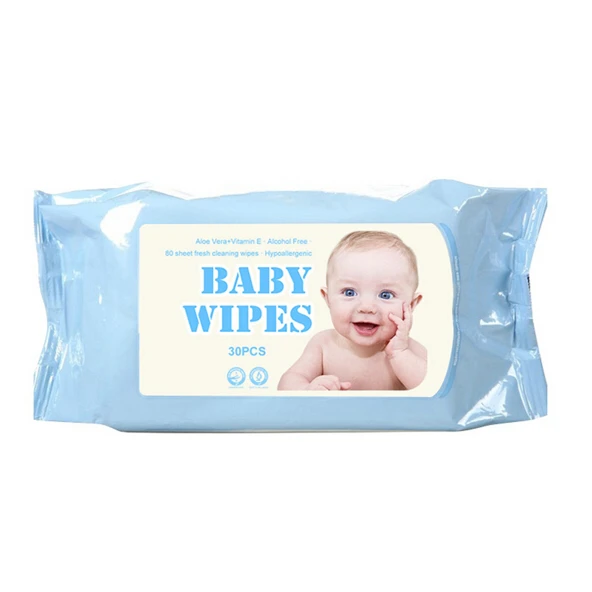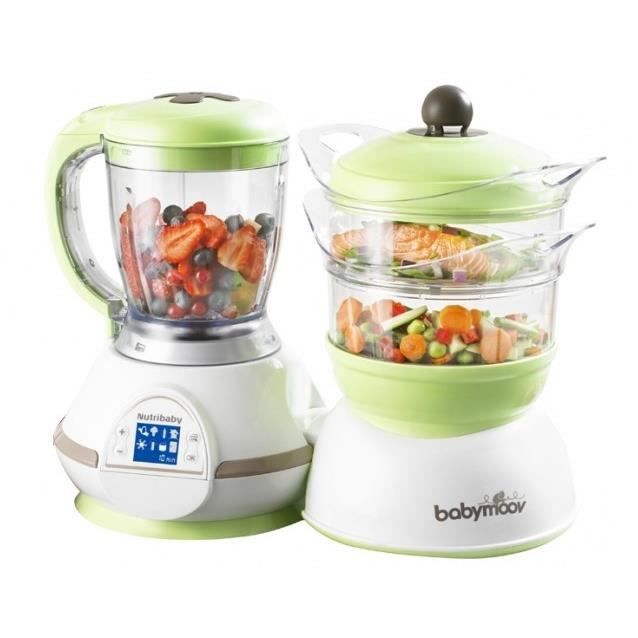Cucumber finger food baby
Cucumber for Babies - Can Babies Eat Cucumber?
When can babies eat cucumber?
Cucumber may be introduced as soon as a baby is ready to start solids, which is generally around 6 months of age. Check out how to prepare cucumber for your baby’s age, as it is a choking hazard.
Need ideas for the best first foods for babies? See our guides.
Background and origins of cucumbers
Native to Southeast Asia, cucumbers are easily grown by commercial farmers and home gardeners alike wherever the weather is sunny and warm. There are so many varieties to try—the small thin-skinned Persian cucumber, the extra-long Japanese cucumber, the round lemon cucumber, the seedless English cucumber, and the ubiquitous Kirby cucumber, to name a few. They range in taste, too; some are sweet, others are bitter, and nearly all are refreshingly cool. Ever wonder about the phrase, “cool as a cucumber”? The inside of a cucumber stays a few degrees below its surroundings because it is mostly made up of water, which takes a lot of energy to heat up.
Cucumber has even earned superstar status in baby-led weaning circles thanks to its cooling effect on little gums and the easy-to-hold shape when sliced into spears. But like many raw vegetables, cucumber is a choking hazard. Check out how to prepare cucumbers safely for baby’s age.
Is cucumber healthy for babies?
Yes, though there’s no superfood status here: cucumbers consist of 95 percent water!
Cucumbers contain small amounts of carotenoids—nutrients, including some that convert to vitamin A in the body, to support healthy vision. Small amounts of vitamin K, plus a little zinc, which are important factors for healthy bones and brain development, are also present in cucumber. They are also a good source of tannins (to promote wound healing) and phytosterols (to help lower cholesterol).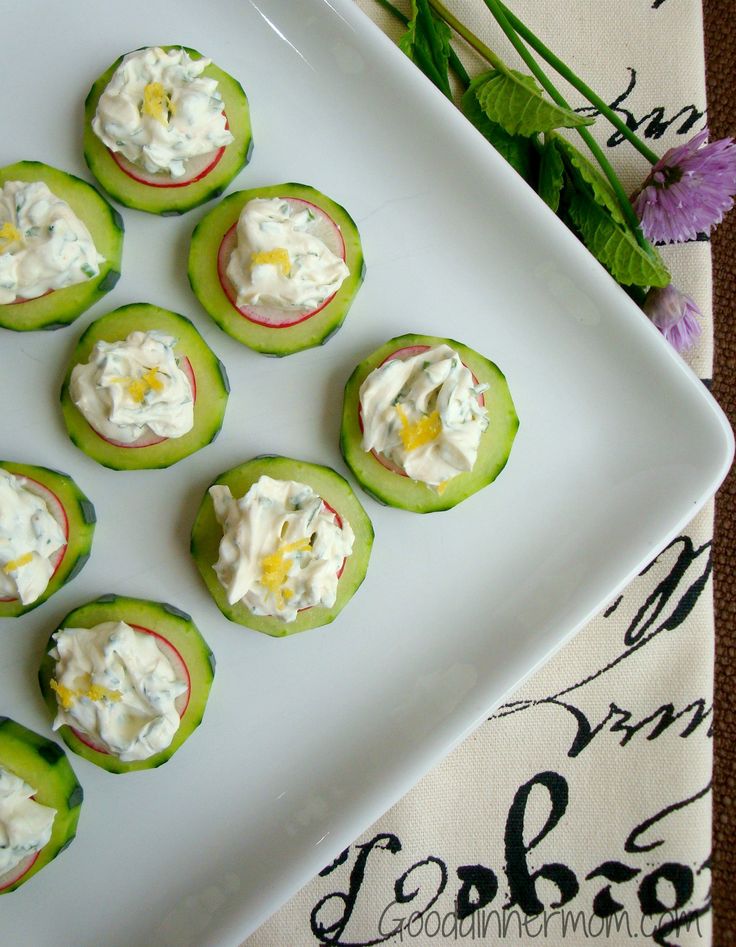 1
1
Note: Cucumbers contain cucurbitacin, an organic compound that can sometimes cause burping and abdominal discomfort.2 3 While there’s no reason to delay introducing cucumbers to babies, removing the skin (where the compound is most concentrated), will minimize the cucurbitacin content.4
A note on pickles: Many pickled cucumbers (aka “pickles”) are submerged in salt and sugar. If you’d like to introduce pickles, wait until at least 12 months of age and try to choose pickles with the least amount of sodium and those that are sugar-free, or very low in sugar.
Is cucumber a common choking hazard for babies?
Yes. Raw vegetables that are firm or hard in consistency are a choking hazard for babies and toddlers. Pickles, and especially whole gherkins, can also be a choking hazard. As always, make sure you create a safe eating environment, stay within an arm’s reach of baby during meals, and check out our age-appropriate serving suggestions.
For more information on choking, visit our sections on gagging and choking and familiarize yourself with the list of common choking hazards.
Is cucumber a common allergen?
No. Allergies to cucumbers are rare, though individuals with Oral Allergy Syndrome who are allergic to ragweed may be sensitive to cucumber.5 Oral Allergy Syndrome typically results in short-lived itching or burning in the mouth and is unlikely to result in a dangerous reaction.
As you would when introducing any new food, start by offering a small quantity for the first couple of servings. If there is no adverse reaction, gradually increase the quantity over future meals.
How do you prepare cucumber for babies with baby-led weaning?
Every baby develops on their own timeline, and the suggestions on how to cut or prepare particular foods are generalizations for a broad audience. Your child is an individual and may have needs or considerations beyond generally accepted practices.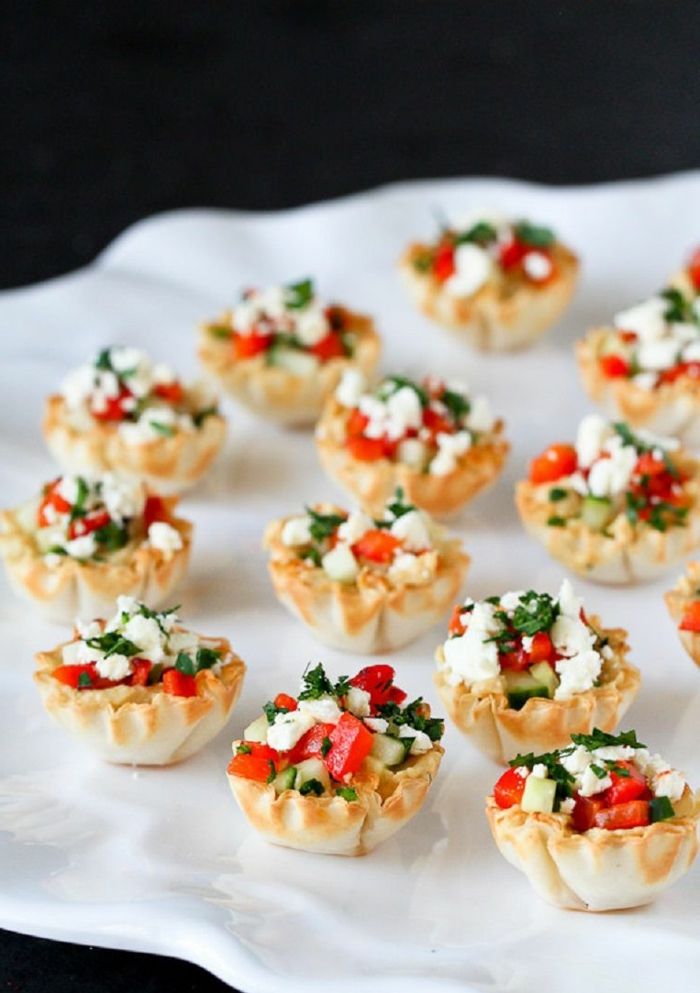 In determining the recommendations for size and shape of foods, we use the best available scientific information regarding gross, fine, and oral motor development to minimize choking risk. The preparation suggestions we offer are for informational purposes only and are not a substitute for child-specific, one-on-one advice from your pediatric medical or health professional or provider. It is impossible to fully eliminate all risk of a baby or child choking on any liquid, puree, or food. We advise you to follow all safety protocols we suggest to create a safe eating environment and to make educated choices for your child regarding their specific needs. Never disregard professional medical advice or delay in seeking it because of something you have read or seen here.
In determining the recommendations for size and shape of foods, we use the best available scientific information regarding gross, fine, and oral motor development to minimize choking risk. The preparation suggestions we offer are for informational purposes only and are not a substitute for child-specific, one-on-one advice from your pediatric medical or health professional or provider. It is impossible to fully eliminate all risk of a baby or child choking on any liquid, puree, or food. We advise you to follow all safety protocols we suggest to create a safe eating environment and to make educated choices for your child regarding their specific needs. Never disregard professional medical advice or delay in seeking it because of something you have read or seen here.
6 to 9 months old: If you feel comfortable with it, offer large cucumber spears with the skin on to make it easy for baby to grab and munch on. Baby will not likely swallow much, potentially just small amounts of the flesh.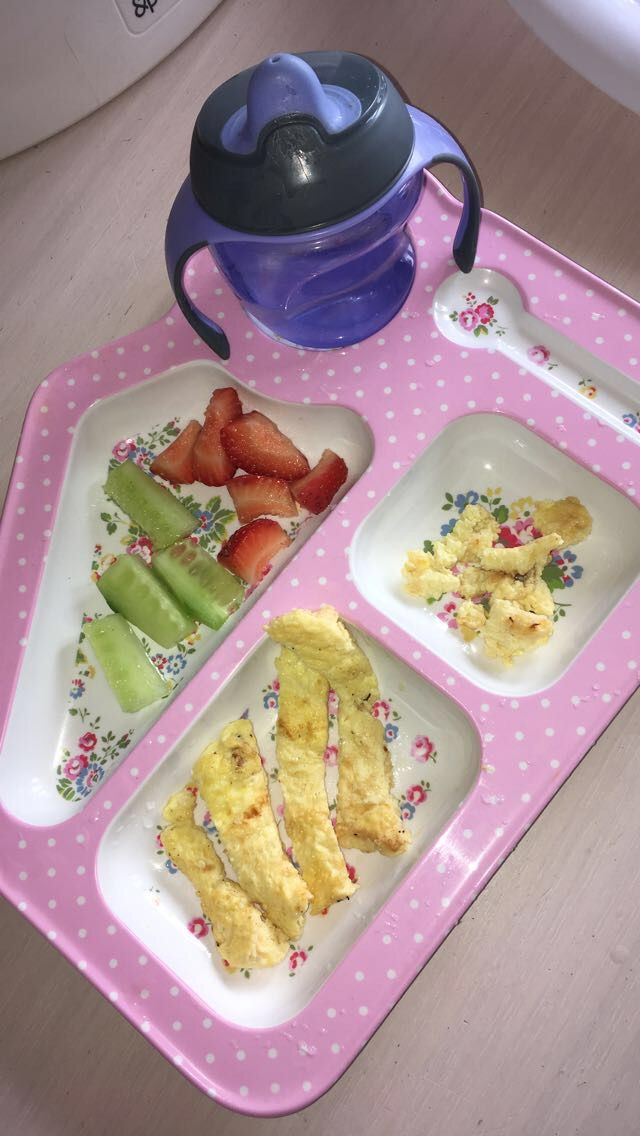 Alternatively, you can consider cutting the cucumber into long, thin slices, which may yield more intake (but possibly more gagging). Either way, if baby breaks off a too-big piece, stay calm and give them a chance to work the food forward before intervening. You can model how to spit out by sticking out your own tongue while saying “ah” and/or tilt the child forward gently and put your hand underneath the chin to signal that they can spit out the food. At this age, babies have built-in reflexes to help keep food forward on the tongue and learning to spit out pieces of food is a critical skill. No matter what, refrain from sticking your fingers in your baby’s mouth, which can push food further back into the throat.
Alternatively, you can consider cutting the cucumber into long, thin slices, which may yield more intake (but possibly more gagging). Either way, if baby breaks off a too-big piece, stay calm and give them a chance to work the food forward before intervening. You can model how to spit out by sticking out your own tongue while saying “ah” and/or tilt the child forward gently and put your hand underneath the chin to signal that they can spit out the food. At this age, babies have built-in reflexes to help keep food forward on the tongue and learning to spit out pieces of food is a critical skill. No matter what, refrain from sticking your fingers in your baby’s mouth, which can push food further back into the throat.
9 to 12 months old: Offer cucumbers cut into long, wide and thin slices with the skin on or off and serve along a food high in protein or fat for a boost of nutrition. When baby has developed a pincer grasp, consider offering small bite-size pieces in addition to the long, thin slices for biting practice.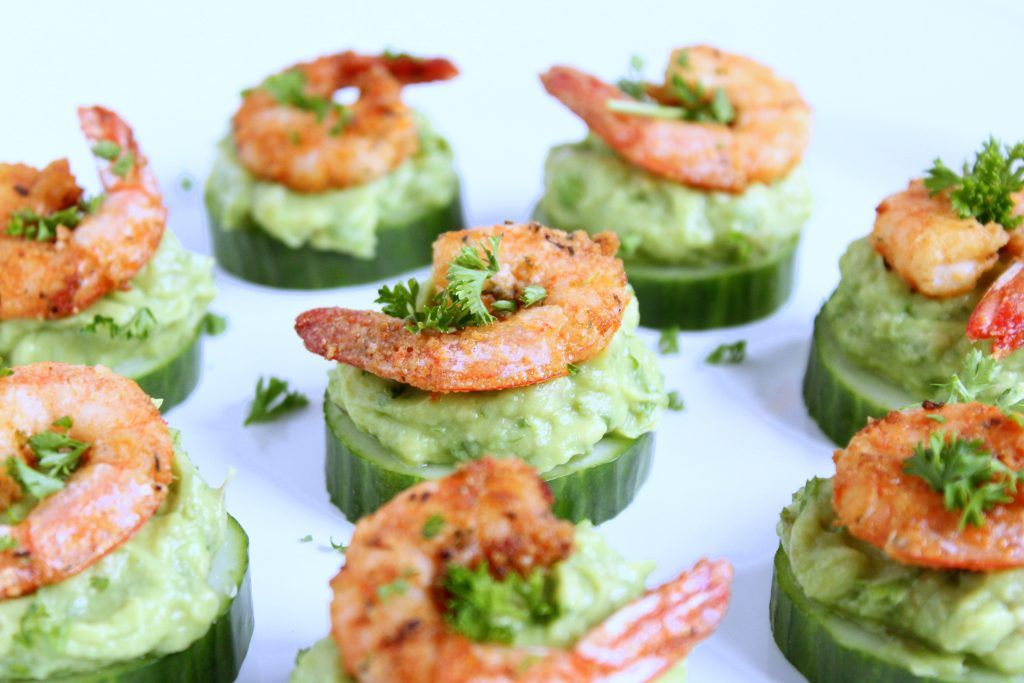
12 to 24 months old: At this age, toddlers are able to pick up cucumbers cut into simple rounds. Coach the child to take small bites by modeling taking bites yourself in an exaggerated way. If you are comfortable with their eating skills, this is also a great time to move back up in size to spears, too.
Long cucumber spears with the skin still on for babies 6 months+Ruler-thin slices of cucumber for babies 9 months+Thin cucumber rounds for children 12 months+Find out if your baby is ready to start solids on our Readiness to Start Solid Food FAQ page.
Recipe: Cucumbers & Dilly Dip
Serving Size: 2 tablespoons / 30 ML
Cooking Time: 5 minutes
Age: 6 months+
Ingredients
- 1 medium cucumber
- 2 tablespoons (30 ml) Greek yogurt (plain, full fat)
- 1 teaspoon extra virgin olive oil
- 1 teaspoon fresh finely chopped dill (or ½ teaspoon dried dill)
Directions
- Wash and slice the cucumber according to our age-specific instructions.

- Add the yogurt to a small mixing bowl and whisk in the olive oil for added fat and nutrition. Transfer to baby’s plate or bowl. Sprinkle the dill on top.
- Serve: Place 1 tablespoon (15 ml) of dip in a small bowl. Cut the cucumber according to baby’s age (guidelines above). Demonstrate how to dip a cucumber into the dip and eat it. Let the baby go for it! Let the baby’s appetite be your guide – they can eat as much as they like by dipping a cucumber into the dip, or you can preload a spoon and hand them the spoon, or they can dig right in with their hands.
To Store: Store the dip in a sealed container in the refrigerator for up to 5 days.
If you are stuck in a puffs and pouches rut, check out our guide, 100 Healthy Snacks for Babies & Toddlers.
Flavor Pairings
The cool, refreshing taste of cucumber pairs well with tangy foods like goat cheese, tomatoes, and vinegar; heart-healthy foods like avocado, sardines, and shellfish; and other fresh fruits like melon and strawberries.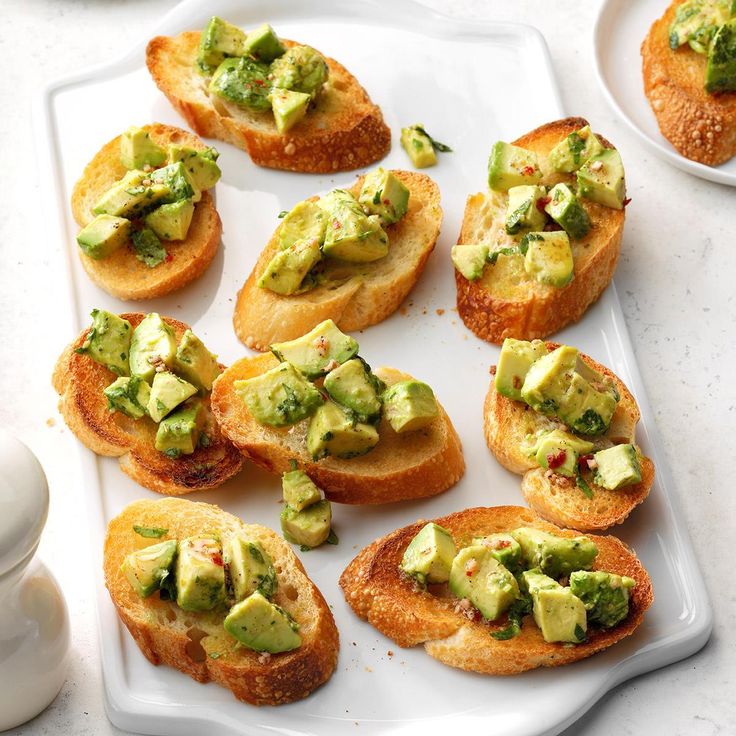 Cucumbers easily pick up the flavor of other ingredients so try mixing them with your favorite alliums (chives! garlic! shallots!), fresh or dried herbs (basil! dill! lemongrass!), and earthy spices like ginger, coriander, and cumin.
Cucumbers easily pick up the flavor of other ingredients so try mixing them with your favorite alliums (chives! garlic! shallots!), fresh or dried herbs (basil! dill! lemongrass!), and earthy spices like ginger, coriander, and cumin.
Reviewed by
E. Cerda, MSN, CNS, LDN
A. Gilbaugh, RD, CNSC
K. Grenawitzke, OTD, OTR/L, SCFES, IBCLC, CNT
S. Bajowala, MD, FAAAAI. Board-Certified Allergist & Immunologist (allergy section)
R. Ruiz, MD, FAAP. Board-Certified General Pediatrician & Pediatric Gastroenterologist
- Rolnik A, Olas, B. (2020). Vegetables from the Cucurbitaceae family and their products: Positive effect on human health. Nutrition, 78, 110788. DOI: 10.1016/j.nut.2020.110788. Retrieved April 27, 2021
- Rolnik A, Olas, B. (2020). Vegetables from the Cucurbitaceae family and their products: Positive effect on human health. Nutrition, 78, 110788. DOI: 10.1016/j.nut.
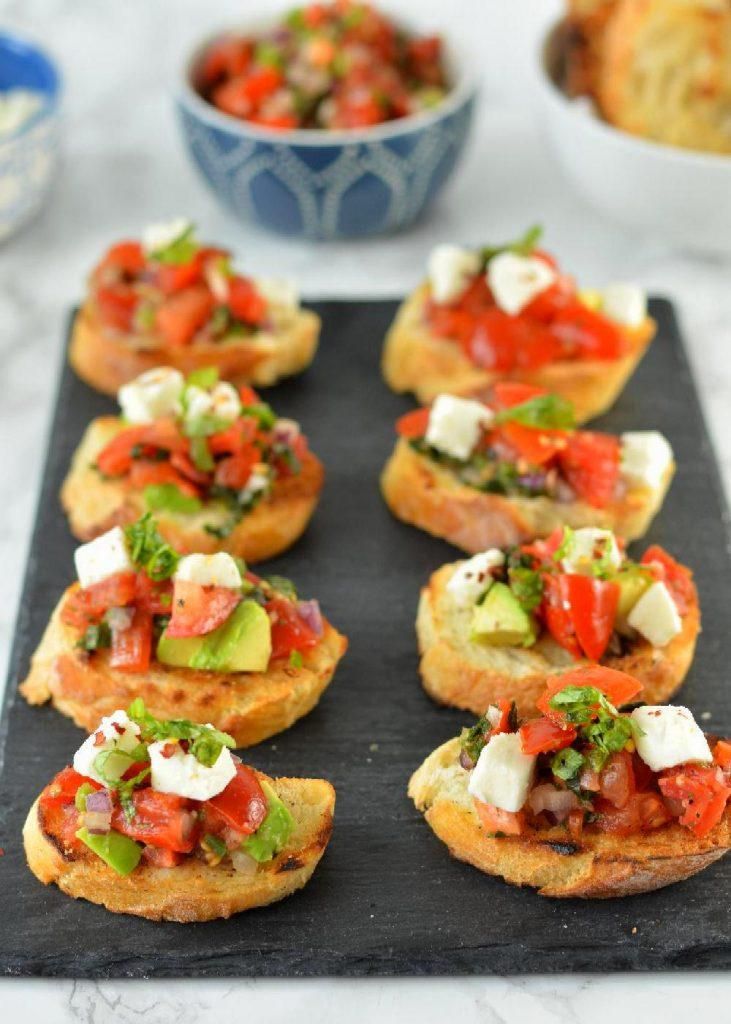 2020.110788. Retrieved April 27, 2021
2020.110788. Retrieved April 27, 2021 - Lerner, R. Bitter cucumbers a temporary problem. Purdue University. Retrieved April 27, 2021
- Myers, Jim. (2010). Cucumber bitterness explained. OSU Extension Service. Retrieved April 27, 2021
- American Academy of Allergy Asthma & Immunology. Oral Allergy Syndrome (OAS) or Pollen Fruit Syndrome (PFS). Retrieved April 21, 2021
Benefits, Age, Precautions, and More
Cucumbers. People tend to love ’em or hate ’em, but either way, they do have a lot going for them. So can you give them to your baby?
The short answer is yes! So let’s take a look at when your little one can have their first taste of cucumber, if this is a safe veggie for teething, and the best way to prepare cucumbers for your baby.
So, when can you give your baby cucumber, and in what form? Experts usually agree — around the same age range when you start introducing solids. But it shouldn’t be the first food. While most babies begin eating solids around 6 months of age, cucumbers shouldn’t be added to the diet until around 9 months old.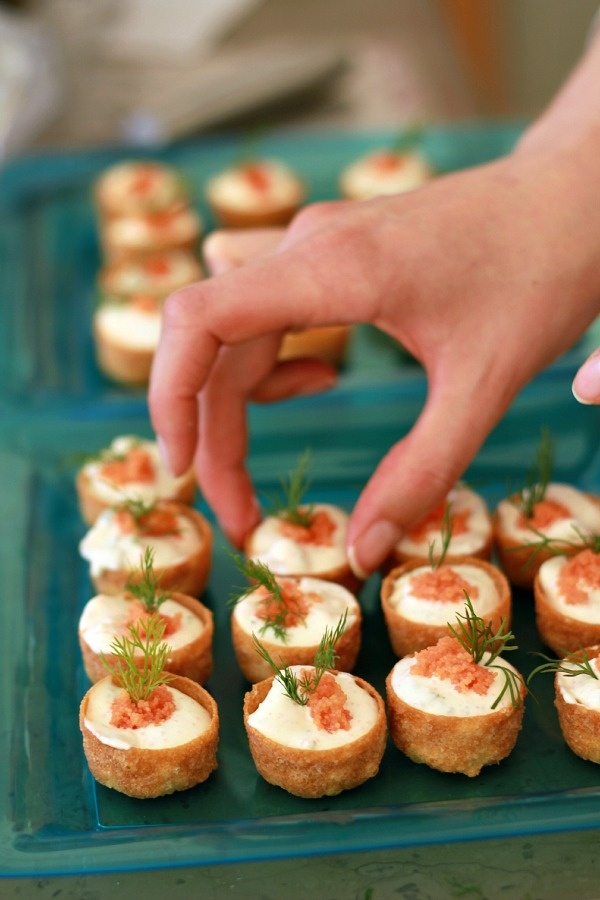
And at that age, cucumber should only be given in a pureed or mashed form. This is because cucumbers have a substance called cucurbitacins, a compound that may be hard for babies to digest.
If you want to give your little one raw cucumbers, wait until they’re at least 12 months old, when they not only usually have more teeth but also have a better-developed digestive system.
So, what’s the big deal with cucumbers, and why are some parents so keen to give them to their mini-me? The truth is that cucumbers offer a wide range of health benefits for people of all ages.
Vitamin-rich
Even though cucumbers are slightly tasteless veggies by some people’s standards, they contain essential nutrients such as vitamin C, vitamin K, folate, potassium, magnesium, silica, and manganese.
Keep in mind though that studies pointing to the nutritional value of cucumbers are usually conducted on adults and focus on eating an adult serving size — roughly a third of a cucumber.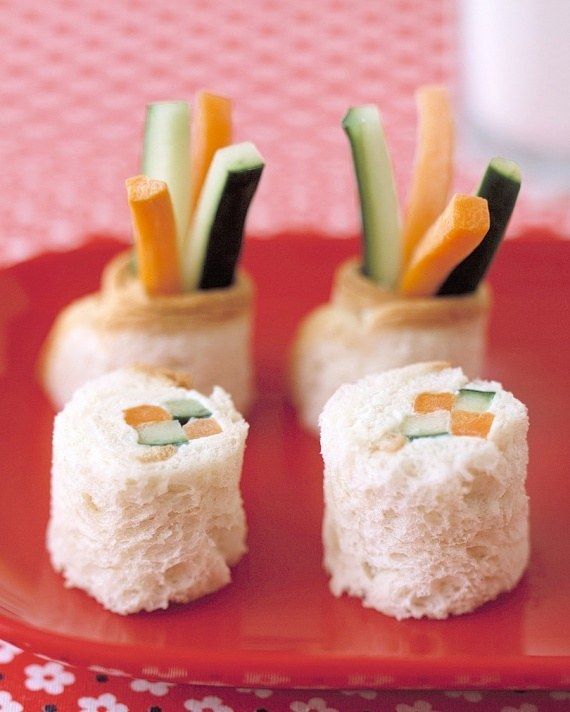 So, while these vegetables are nutrient-rich, they’re not a substitute for giving your baby a balanced diet to ensure proper nutrition.
So, while these vegetables are nutrient-rich, they’re not a substitute for giving your baby a balanced diet to ensure proper nutrition.
Additionally, experts usually recommend eating cucumbers in their raw, unpeeled form to get the most nutritional and fiber benefits. So, for 9-month-old babies eating cooked cucumbers that are pureed or mashed, the total nutritional benefits are going to be significantly limited.
Hydration and antioxidants
Still, cucumbers are rich in antioxidants and can be a great source for added hydration. And all that hydration can also ensure that your little one stays regular. So, if you’re concerned that your child is constipated, added water from cucumbers can help get your baby’s bowel movements back on track.
Skin benefits
You may know that many brands promote cucumber as a target ingredient to help with not only hydration but to soothe the skin and banish swelling. Well, those same benefits can be found by noshing on cucumbers — even in babyhood.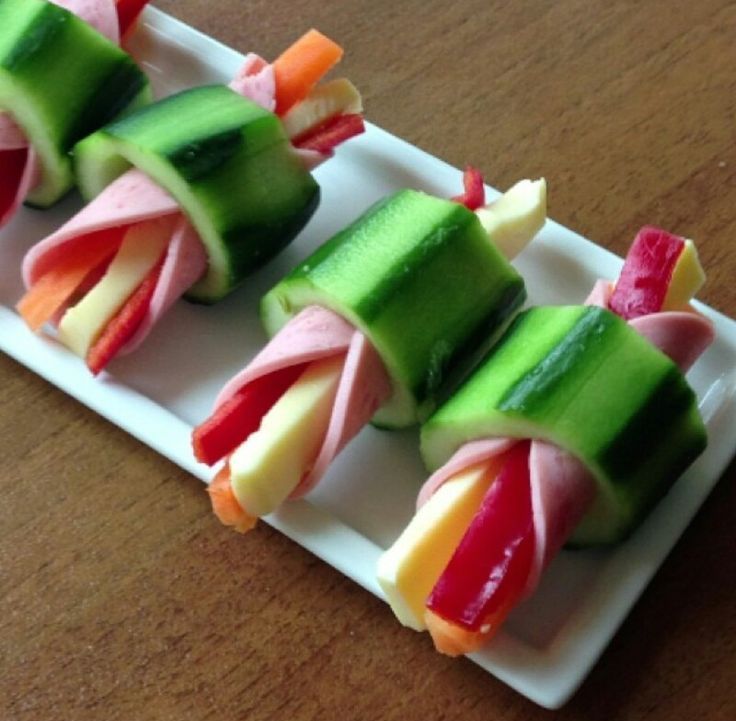
So, now you know why cucumbers are beneficial and when you should introduce them — and in what form — to your baby’s diet. But if you’ve never made baby food before, you might feel a little overwhelmed.
Regardless of which age range you’re feeding, always test the cucumber first to make sure that it’s not too bitter.
Cucumbers for a 9-month-old
If you remember, we noted that 9 months is the earliest you should introduce cucumbers to a baby. And if you choose to do so, the cucumber should be mashed or pureed.
Always start by thoroughly washing the vegetable. It’s up to you whether or not you want to peel the cucumber first, but if you’re concerned about increasing the nutritional value, leave the peel on.
Steam or boil the cucumber for 10 to 15 minutes or until it’s soft enough that you can poke it with a fork and the fork easily spears it. Depending on the blender or mixer you have, you can put the cucumber in whole, or chop it into large sections.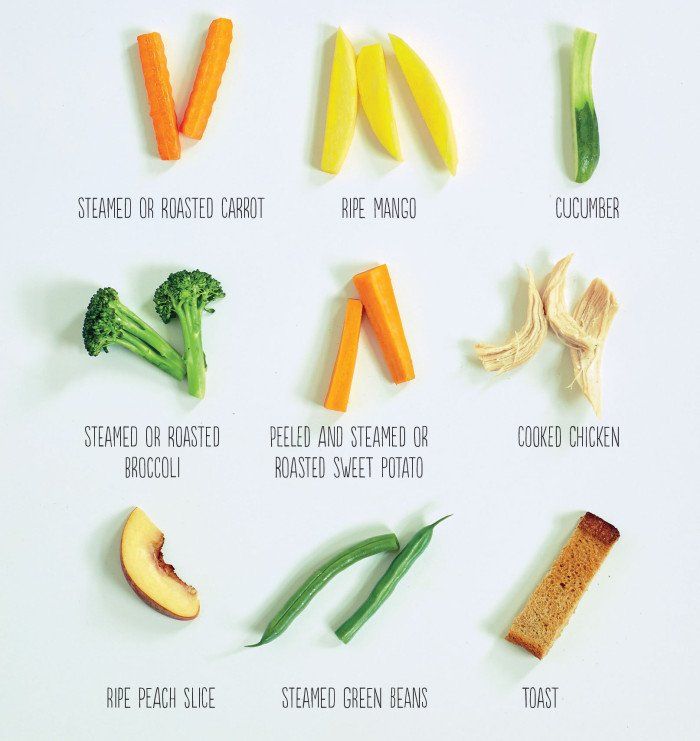 Blend the cucumber on high for a puree, and add water as needed to create a smooth consistency.
Blend the cucumber on high for a puree, and add water as needed to create a smooth consistency.
For mashed cucumbers, you can opt for a chunkier texture, but you may still want to add water for a slightly smoother texture that isn’t too gritty.
If this is the first time that you’re introducing cucumbers, be sure to slowly add it into your little one’s meals. Avoid introducing any other new foods for 3 to 5 days to ensure that your baby isn’t allergic or has an intolerance to them.
Cucumbers for 12 months and older
With a 12-month-old, you can begin to introduce raw cucumbers. For these tots, the prep process is significantly easier and would be no different than if you were cutting up cucumbers for yourself.
Make sure that the cucumber has been thoroughly washed, and again test a piece to ensure it’s not bitter. For maximum nutritional value, leave the peel on and cut the cucumber into small enough pieces that won’t pose a choking risk.
It’s important to remember that cucumber can be one of those polarizing vegetables that some people will never like as a solo dish.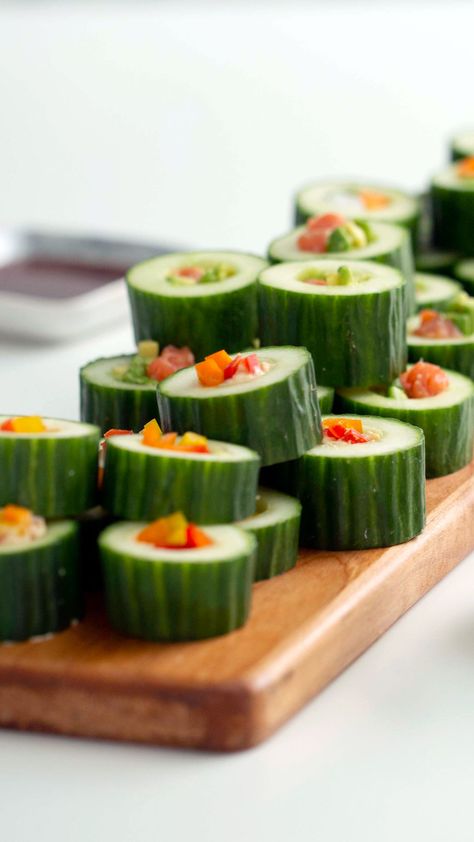 You might want to consider creating puree blends — especially for infants younger than 12 months — if you have your heart set on adding cucumbers to your baby’s diet.
You might want to consider creating puree blends — especially for infants younger than 12 months — if you have your heart set on adding cucumbers to your baby’s diet.
Popular blends like pears and cucumbers or even apples and cucumbers can help to mask the bland yet slightly bitter taste that many people feel the vegetable has.
Baby-led weaning is exactly as it sounds. Rather than waiting until an arbitrary time, you can begin to introduce purees or finger foods to your baby as soon as they exhibit signs of readiness. This includes:
- being able to sit upright
- good head and neck control
- curiosity around table foods during mealtime
- the ability to hold food in their mouth as well as chew it
The truth is there’s a disconnect here between scientific and many parenting communities regarding cucumbers and baby-led weaning.
While the scientific community recommends not serving raw cucumbers to babies under 12 months because of the risk of digestive upset, many parenting groups will say that it’s perfectly OK because it’s a hard, crunchy, tactile food that’s easy for little ones to grasp.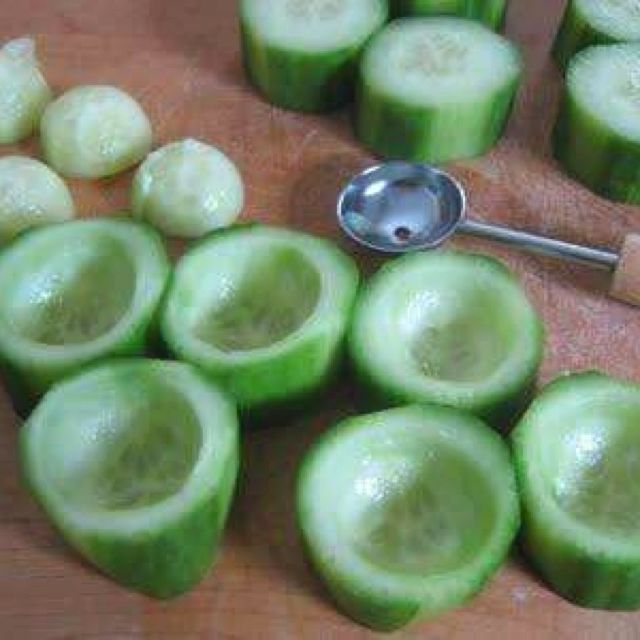
We recommend waiting to introduce raw cucumbers until your baby is at least 12 months old. Ultimately, you’ll need to decide if the potential for upset stomach or gastrointestinal discomfort is too much or not enough of a concern when it comes to introducing cucumbers to your baby.
But if your child has struggled with tummy issues before introducing solids, it’s probably a good idea to cut cucumbers from a baby-led weaning plan.
On the other hand, if you’re not a fan of teething toys, cucumbers can be a popular solution for teething. A common option is to make chilled cucumber rings. This is an easy-to-make teething relief hack in which sliced cucumber rings are dredged in a tasty fruit puree (as your baby may reject a plain cucumber slice) and then frozen until needed.
Before giving the cucumber rings to your baby, be sure to let them thaw a bit at room temperature so that there’s no risk of a frozen ring sticking to your baby’s tongue or mouth.
Likewise, you should always supervise your child while they use a cucumber teether since there’s a chance that gumming at it for a while could cause pieces to break off and pose a choking risk.
Are cucumbers the most high-nutrient food your child will ever eat? Most likely, the answer is no. But when prepared the right way, they’re a great way to help diversify your baby’s diet and add essential hydration.
While the jury is out on whether or not they’re a great idea for baby-led weaning, they can also be natural remedies for irritated gums during teething.
Finger food after a year - Encyclopedia Baby food
Levchuk Victoria©Levchuk Victoria©
What is finger food after a year? What it happens to be, and I wrote the finger food rule in previous articles. Today I would like to discuss finger food after a year, how it changes and how it looks. I just noticed yesterday that I have a large number of photos of finger food. I take photos almost every day since at least one meal consists of finger food. I decided to write an article and show our example.
Table of Contents:
After one year of age, finger food becomes very diverse and includes almost all products that are included in baby food.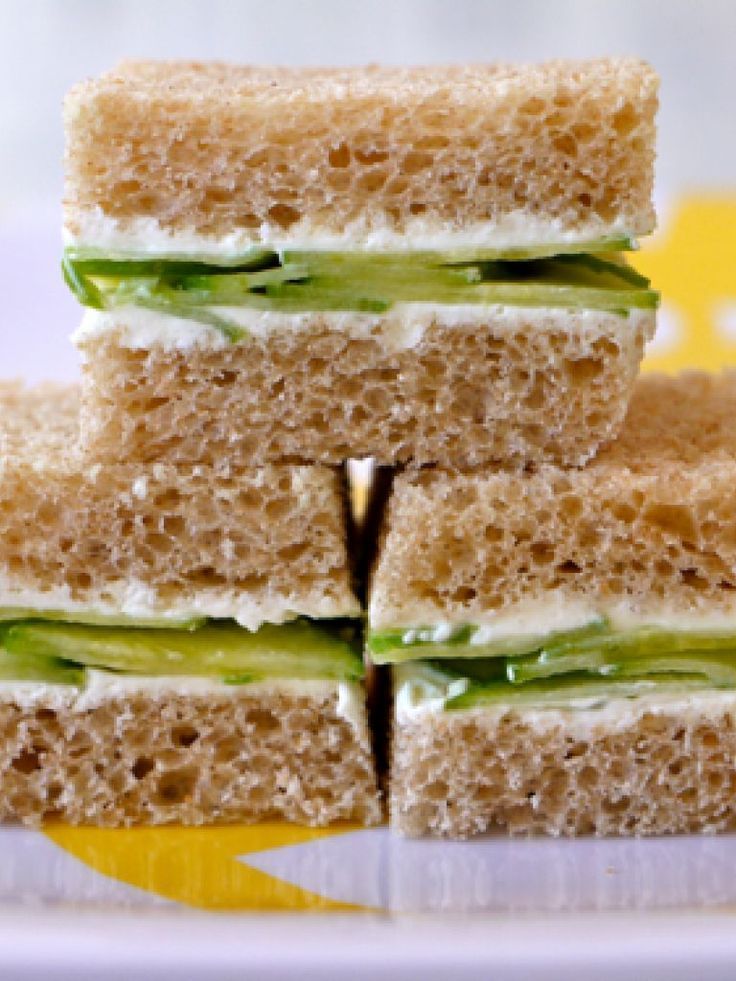 If the first months of acquaintance with lumpy food, it is mostly boiled, we do not give anything raw to the child in order to avoid choking. Then after a year you can give boiled, semi-cooked and raw foods, which is very convenient, well expands the diet of baby food.
If the first months of acquaintance with lumpy food, it is mostly boiled, we do not give anything raw to the child in order to avoid choking. Then after a year you can give boiled, semi-cooked and raw foods, which is very convenient, well expands the diet of baby food.
Sometimes, when laziness runs faster than thought, it's easier to collect fruits and vegetables from the refrigerator, cut them into small pieces and give them to the baby than to feed from a jar. A good second breakfast or afternoon snack, even as a snack is great. You can also organize breakfast, which consists of cheese / eggs, bread, boiled meat, apple / banana - a great snack, of course, without porridge (grain lovers - without slippers), but once a week you can take a break for yourself, and the child will nibble well such food, enjoy and train fine motor skills. The main thing is to watch and sit next to the baby so as not to choke.
A big plus for is that cooking does not require a lot of utensils and kitchen utensils, usually a knife, a cutting board and a baby plate are required.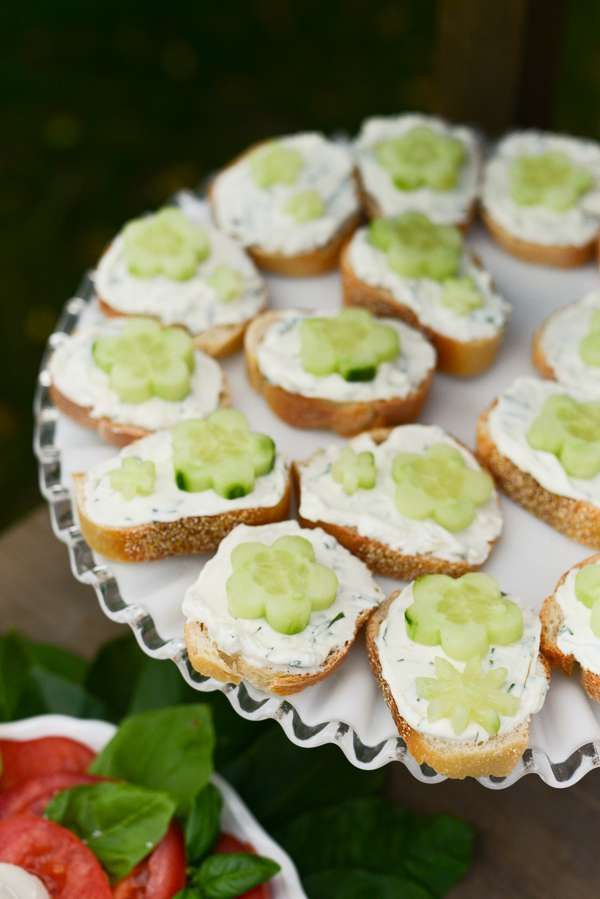
Another plus for finger food. If the products are semi-solid, not very soft, then you will hardly have to wash the child and the place where he eats will remain almost clean.
+ the child trains fine motor skills, the parent does almost nothing, and the child learns.
See how many pluses there are just from the fact that mom put the right finger food on the table for the baby.
Finger food is inexpensive and easy to find in any refrigerator.
Moreover, I would like to draw your attention to the fact that after a year, lumpy food is taken not only at the table, but also on the street, on the move, etc. The child can already move around the apartment with a piece of an apple or pear, playing and snacking. The main thing here is to keep an eye on the baby, they love to make nests, and fruit nests rot or dry well. In short, it's nice to find another cache of a child, and even more fun to pull it out of your mouth when a child has found it.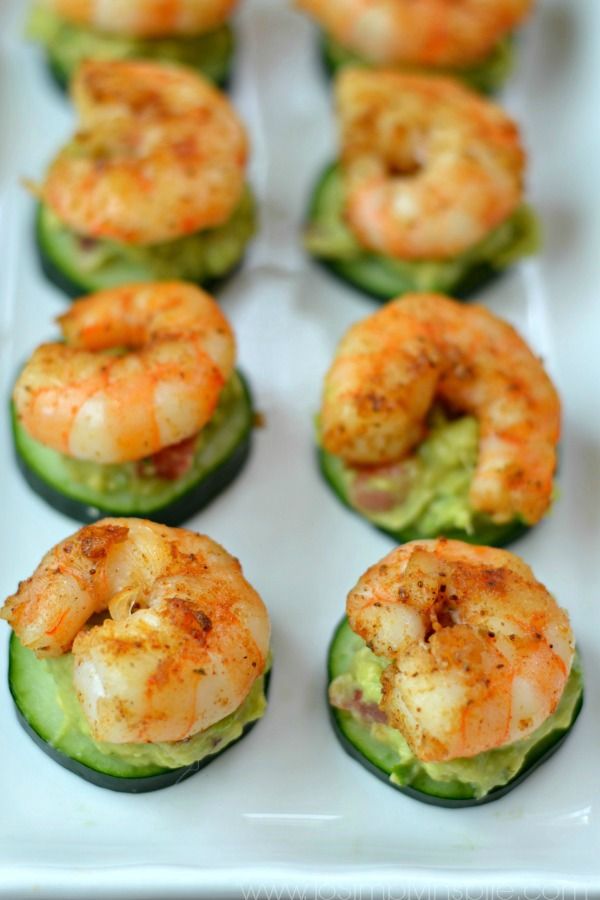
For long trips, finger food is an excellent solution, it is easy to transport, nothing will overflow, long-term storage without refrigeration is possible. A small advertisement for finger food.
Our finger foods
At the moment we love finger food. We like to eat cheese, eggs, fish/meat cutlets, bread, different fruits, vegetables on our own. The child takes the product in his hands and stuffs everything into his mouth, then chews. Not always, it turns out, to eat all the food, sometimes he loses it, then I find it either on the floor or in a high chair. Therefore, portions of finger food are quite large, but about half gets into the mouth. Partly we play, although we try to stop such behavior, but the child is only a year old, which can be discussed.
Soups can also be eaten like finger food, it's just that we are friends with a spoon, but it's still bad, liquid broth pours out of a spoon. Therefore, we like to catch hard boiled foods from the soup and eat them.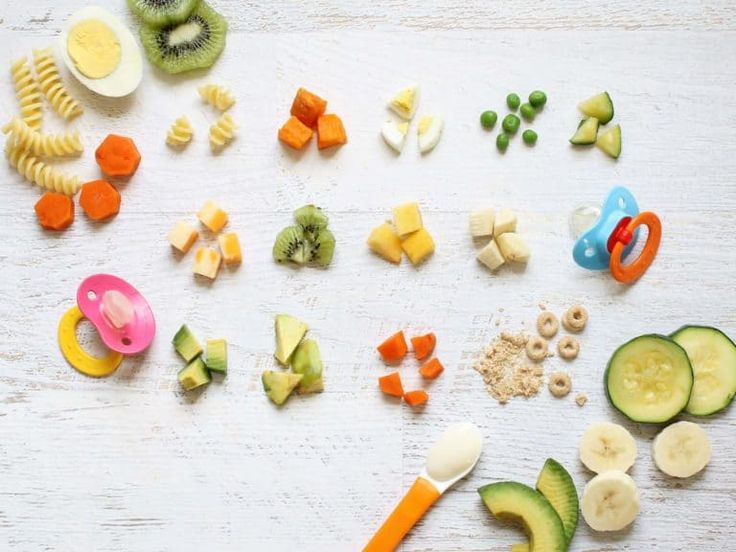 Sometimes he scoops up the product with a spoon, then takes it from the spoon, puts a piece into his mouth with his hand, and only then chews it.
Sometimes he scoops up the product with a spoon, then takes it from the spoon, puts a piece into his mouth with his hand, and only then chews it.
I so often hover over my plate just by watching my son eat. It's so cute and messy and amazing every time. He tries, sometimes he freaks out, and then the spoon flies to the floor, and his hand climbs into the plate. Every time he comes up with a new way to eat food. Only recently they weaned him from putting his foot on the table, put his foot down, sits on his own, hands in a plate and eats, in general, in my adult opinion, it’s quite uncomfortable, but he sits and eats.
Click on me!!! Click on me!!! Click on me!!! Click on me!!!Finger food is hard
Click me!!!For some reason, many mothers think that they need to come up with finger food, try to cook original recipes, etc. But it's not.
The child has switched to a common table or partially switched, so you can give adult products. Ordinary cutlets are perfectly chewed by the number of teeth that the child now has in his mouth, he chews something with his teeth, something with his gums.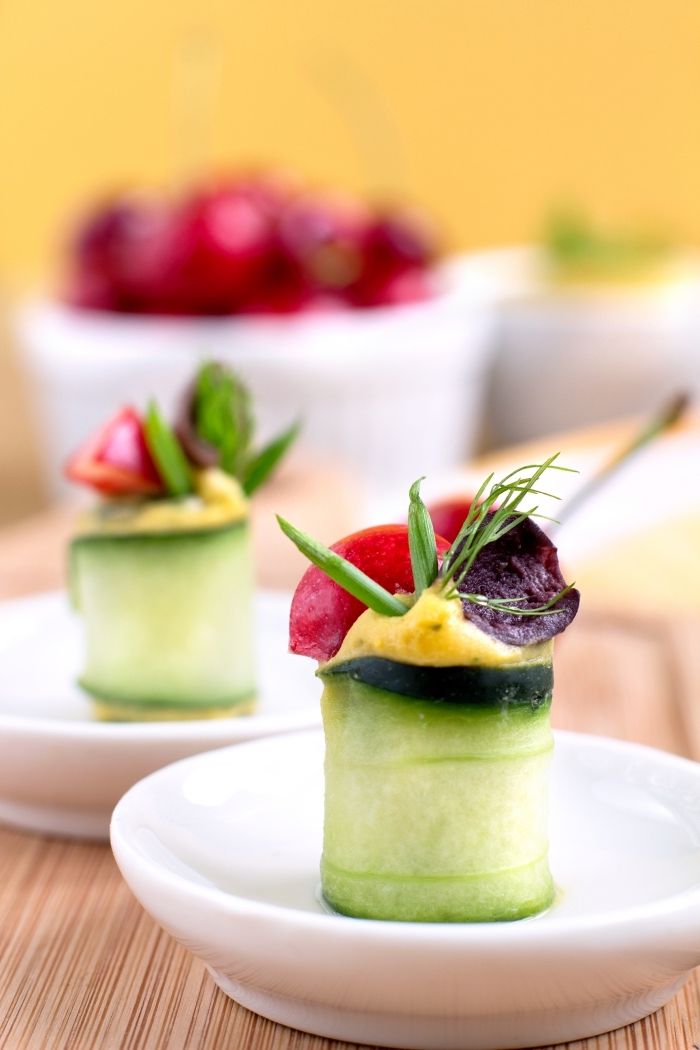 Cottage cheese casserole, cut into small pieces, an excellent snack.
Cottage cheese casserole, cut into small pieces, an excellent snack.
All fruits and vegetables included in complementary foods can be given as finger food. Just be careful with vegetables, since most of them are still boiled. But the child is already able to digest food 2 days old if it was stored in the refrigerator. Therefore, we cook several types of vegetables at a time and divide them into several meals. If you don’t want to give a pure product, then we make sauces, for example, cheese sauce for broccoli, it’s delicious, the kids like it.
Meat and fish, simply boiled. If you divide raw meat or fish into small pieces, then they will cook for no more than 15-30 minutes. But since the child already eats chicken, beef, when we cook soups or borscht for the whole family, we put aside a piece of meat / fish for the next meal of the child. I don’t know about you, but since I’m on parental leave, I cook every 2 days, so I can feed my family with fresh meals. Of course, it is better to cook the meat each time new, or store it in the broth for a day so that it does not dry out.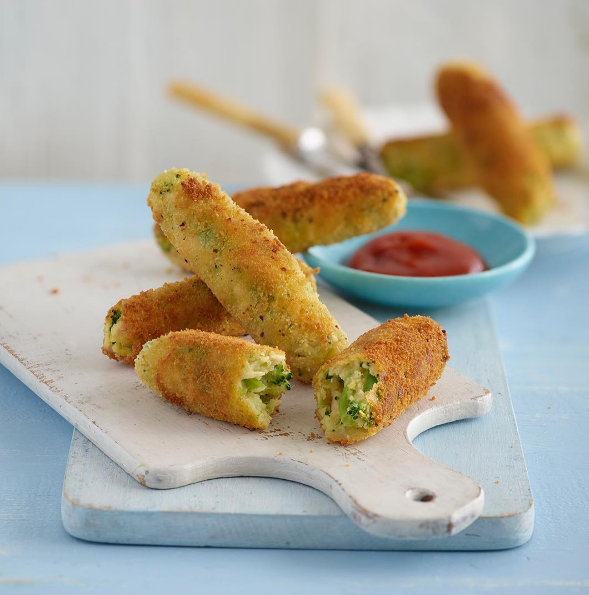 Then I don’t like meat to taste, but this is my personal opinion.
Then I don’t like meat to taste, but this is my personal opinion.
There are many examples of finger food, see the photo. Even in the group in contact Baby food (Encyclopedia) under the tag #creative breakfast, you can see examples of finger food. Click on the photo and see it in a larger size.
Chicken and carrot cutlet, broccoli and cauliflower Bananas and apples with sugar-free yoghurt Apples baked in the oven. Chicken fillet, cucumber, broccoli, apple, Borodinsky black bread, children's cottage cheese as a sauce Broccoli, carrots and boiled fish fillet — Navazhka Pasta and broccoli Prunes Broccoli and cauliflower Chicken and carrot cutlet, pasta, cucumberAbout finger food sauces
I know how much I want to help my child diversify his taste preferences, but it's too early. The kid is still chaotically waving his arms and using them poorly. Although you probably noticed how carefully he takes a spoon or a mug to perform simple actions, but at the same time he strives to drop or turn them over.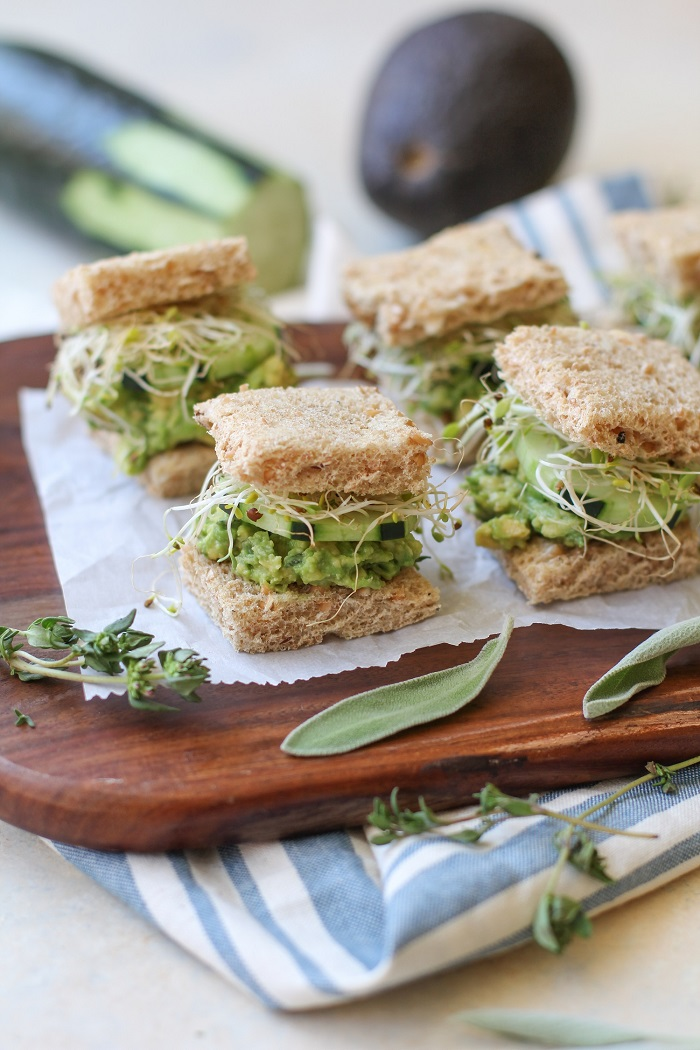 That's why it's not the time for finger food sauces. Just because the child can turn it over, but most likely it will get dirty from head to toe, which mom will have to clean up. You can put a spoonful of sauce and show the baby how to dip a piece of food in it, but you will have to carefully monitor the actions of the child, otherwise there will be more cleaning.
That's why it's not the time for finger food sauces. Just because the child can turn it over, but most likely it will get dirty from head to toe, which mom will have to clean up. You can put a spoonful of sauce and show the baby how to dip a piece of food in it, but you will have to carefully monitor the actions of the child, otherwise there will be more cleaning.
What is now suitable for sauces. If the child is familiar with dairy products, then yogurt, cottage cheese with yogurt (so that it is liquid), cheese sauce without spices, and, probably, that's all.
You can also offer any vegetable/fruit puree for sauce that your child is familiar with.
Food hacks for easy finger food
Banana is easy to eat with a small hand In the article Fifteenth Week of Weaning - Turkey and Sautéed Garlic, I wrote how to cut a banana so that it is convenient for a child to eat. In an article about bananas in baby food, she wrote how to quickly and easily make a fruit convenient for finger food. Now I will not repeat myself, I just attach a photo.
Now I will not repeat myself, I just attach a photo.
I also pay attention, if a child eats from a common table, then we make a dish under the child's hand. Those. if a cutlet, then a small size, three or four cutlets can be made for the youngest member of the family. It’s just that it’s inconvenient to hold a large chunk in your hand, and now the main thing is a manual grip so that the child can hold the food in his fist and bite off. Therefore, food can be made in the form of a rectangle, like fish sticks.
Pear, it is convenient to take with a small hand, the child eats everything without a peel. With the same consideration, we prepare children's cookies, cut bread pita bread or bread, cottage cheese casseroles and muffins. The child is comfortable with either a thin long stick, or medium squares. We tear the meat into fibers or cut into small cubes. You should not grind food too much, it is difficult to take it with children's fingers, otherwise you will see a picture of how the baby is trying to take food from the table with his mouth.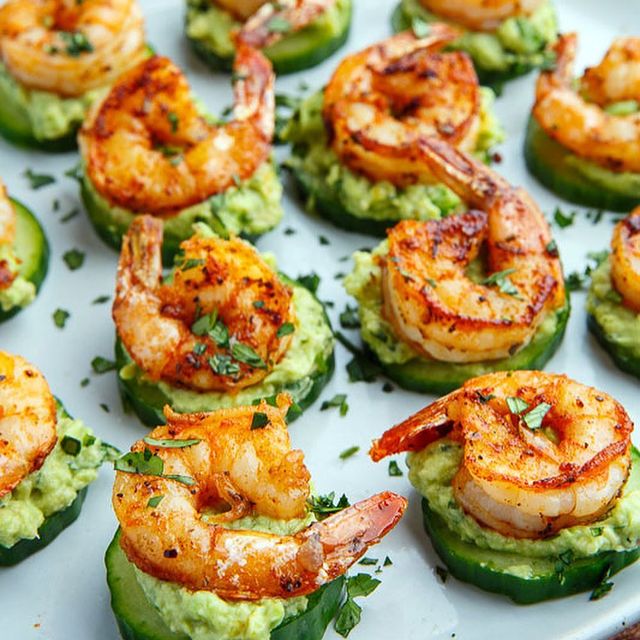
An apple corer is very useful. With it, you can make a long round tube without a peel. It is convenient for the child to hold, the peel does not interfere with biting the delicious middle. Suitable for large apples, pears, cucumbers, i.e. medium hard products. Fresh carrots are a very hard product, so for now only a grater. In short, fresh vegetables and fruits of increased hardness (carrots, white cabbage, etc.), which need to be carefully chewed by a child after a year, should be given fresh after a fine grater until the set of teeth expands.
Dividing a banana into three parts with a finger. If the pear has a core, then cut it out. An apple without a core. Next to it is a fruit peeler. We give an apple to a child without a peel. Basically, if you have any doubts about giving your child fresh or boiled finger food, then boil it, it will be safer. The main thing here is the confidence in the child that he will be able to bite off, chew, swallow without choking, and then digest it and get rid of the unnecessary without pieces of undigested food.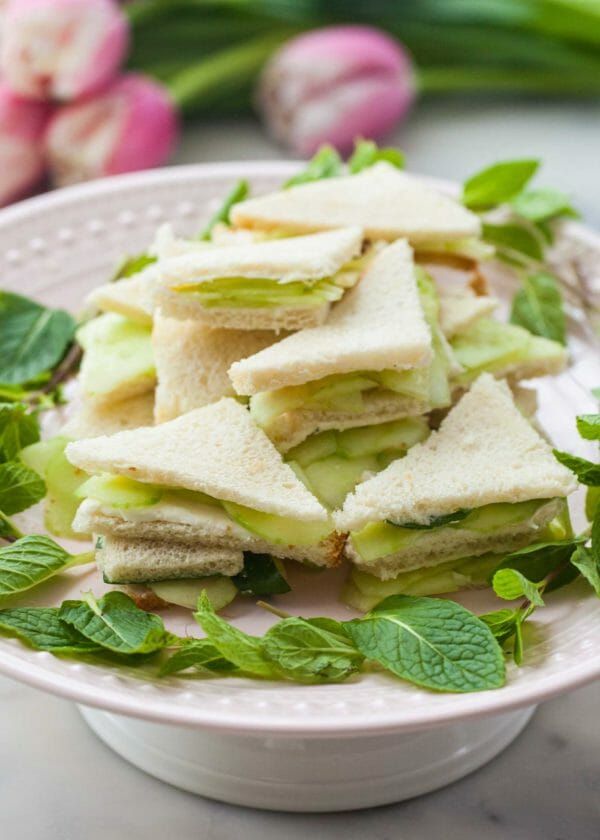 If these physiological processes in a child are going well, then you are confident in your child and you can give him fresh finger food.
If these physiological processes in a child are going well, then you are confident in your child and you can give him fresh finger food.
We are not afraid and add me to VK and Odnoklassniki, Instagram!
Like this article? Subscribe to site updates
"Encyclopedia Baby Food"!
Don't forget to bookmark us! (CTRL+SHIFT+D) Subscribe to the site, comment, share in social networks.
Our site Encyclopedia Baby Food has useful information on the nutrition of your children, which is useful for everyone, and we update the site "Encyclopedia Baby Food" constantly and try to search and write only excellent, verified and necessary information for you and your children.
Disclaimer No. 1: It must be understood that the author of the articles on the Baby Food Encyclopedia website is not a medical staff, “I am not a doctor.” The information I share is based on my own experience.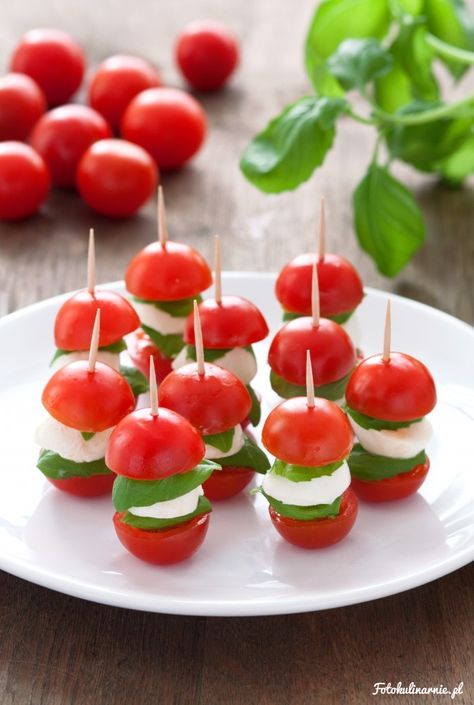 My goal is not to teach you how to eat or feed your child, but to talk about how we did it, what new things I learned or read. This expands the picture of Baby Food knowledge, gives you a glimpse of the whole process so you can decide if you like it or not.
My goal is not to teach you how to eat or feed your child, but to talk about how we did it, what new things I learned or read. This expands the picture of Baby Food knowledge, gives you a glimpse of the whole process so you can decide if you like it or not.
Disclaimer No. 2 : However, the above does not cancel visiting a pediatrician. Before you start complementary foods, you need to get his professional opinion on the best way to introduce new foods for your baby. I also draw your attention to the fact that you need to look at the original date of the published articles, because some of the "best practices" may have changed. Always check with your child's pediatrician about complementary foods and their health.
Disclaimer #3: Keep in mind that every family is unique, every situation is also completely unique. There are no universal solutions. Only you can find what works best for you. Certain goals require certain sacrifices and priorities - not everyone wants to make those choices, and that's GREAT! Just know what you want to achieve and be ready to get to work, putting the best of your strength!
Disclaimer No.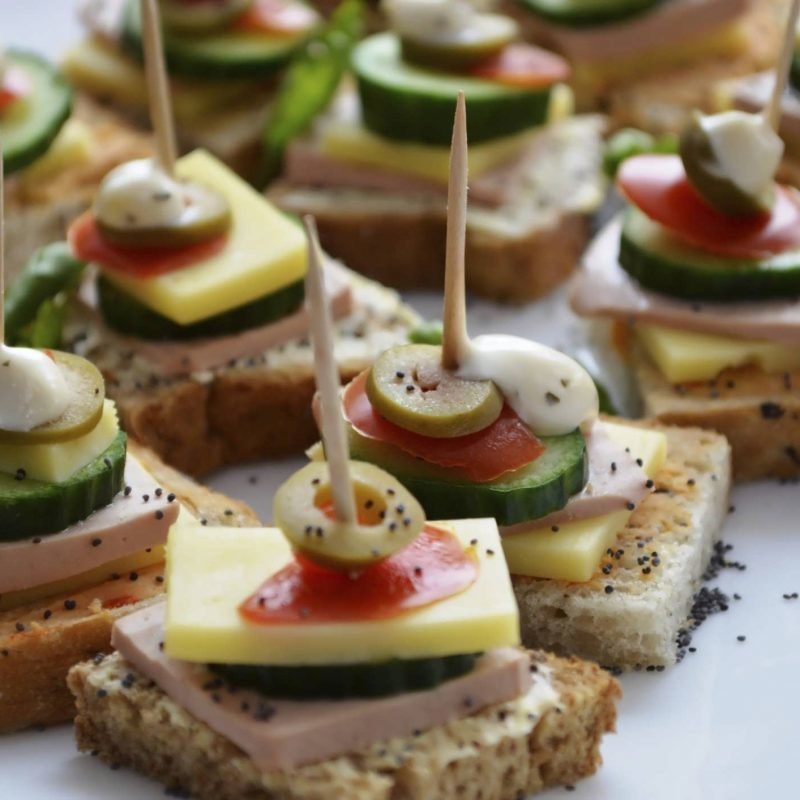 4: On the Encyclopedia Baby Food website, photos from books on baby food with attribution are used for a more complete understanding of the information (Article 1274, Clause 1, Part Four of the Civil Code of the Russian Federation). Literature on baby food is found in the public domain on the Internet.
4: On the Encyclopedia Baby Food website, photos from books on baby food with attribution are used for a more complete understanding of the information (Article 1274, Clause 1, Part Four of the Civil Code of the Russian Federation). Literature on baby food is found in the public domain on the Internet.
Apricot puree with chicken
Banan-global puree
Banana puree
borsch
broth with peas and rice
11 Boturbrod
Quick dessert
Buckwheat porridge with apricots
Buckwheat porridge with banana
Buckwheat pilaf
Children's sausage
Children's milk porridge with banana
Children's vinaigrette
Children's ketchup
Children's cucumber salad
Children's salad Olivier
Children's porridge biscuits
Children's puree of strawberries, bananas, yellow cherries, yoghurt and biscuits with cereals
Children's puree with cottage cheese and fruit
Homemade yeast bread with flax flour
Homemade cheese
Homemade pizza
Breakfast1 outside Kohlrabi appetizer
Roasted cauliflower
Roasted carrots
Roasted carrots and cherries with millet
Winter salad with Jerusalem artichoke
Cabbage with white beans
Cabbage salad like in a canteen
Mashed potatoes
Quinoa and pumpkin porridge
Quinoa porridge
breakfast porridge
Quinoa and apple
Strawberry puree
Strawberry puree with banana
Strawberry compote
Wild apple and raspberry compote 8 months
Corn porridge
Corn porridge with pear
Corn porridge with pumpkin
Corn porridge with pumpkin and carrots
Corn porridge with apple and carrots
Chicken liver in the oven
Chicken cutlets with carrots
Chicken with carrots, sweet peppers and potatoes
Naval pasta
Macaroni with orange sauce
Gremolata pasta
Muffins with vegetables and egg
Jacket potatoes
1 Vermicelli milk soup1 Carrot puree
Carrot-rice casserole
Carrots with chicken
Fly agaric from eggs and tomatoes
Meat envelopes
Homemade Tarragon drink for children
Vegetable puree from cauliflower and carrots
Vegetable soup with corn semolina
Vegetable soup with cheese and corn semolina
Vegetable soup with spinach
Vegetable puree soup with bell pepper
Oatmeal porridge
Pollock fritters
Hot yogurt fritters
Omelet in a bag
Spinach and Cheese Omelette
Omelette Pancake
Peach Puree
Baked Apples 7 months +
Zucchini and Carrot Pie
Zucchini Pie
Rice and Zucchini Pie
Fish Pie
Fish and potato pie
White cabbage pizza
Lavash pizza
Zucchini, tomato and sausage pizza
Tomato and olive pizza
Spinach pizza
Rabbit pilaf
Chicken pilaf with green peas and 1 banana Puree 9011 and cherries
Banana, cottage cheese and porridge puree 4 cereals
Broccoli (cauliflower) puree
Broccoli, courgette and cauliflower puree
Blueberry puree
Pear puree
Pear and banana puree
Pear and banana puree, baked
Pear and pumpkin puree 7 months +
Pear, pumpkin and peach puree
Pear, apple, plum and prunes puree
Blackberry puree
Turkey puree
Zucchini puree 90 zucchini and broccoli
Zucchini, carrot and potato puree
Quinoa and banana puree
Quinoa and carrot puree
Quinoa, banana and carrot puree
Quinoa, squash and carrot puree
Quinoa, peach and raspberry puree
quinoa, cauliflower, apple, peas and mint
Quinoa, apple, pear and raisin puree
Quinoa, apple, carrot puree
Rabbit, broccoli and cauliflower puree
Chicken, carrot, potato, apple and pea puree
Raspberry, cherry and banana puree
Carrot and Apple Puree
Carrot, Potato, Broccoli and Cheese Puree
Carrot, Potato, Apple and Quinoa Puree
Carrot, Pumpkin, Apple and Prune Puree
Carrot, Apple and Potato Puree
Turnip and carrots
Plum puree
Cottage cheese, strawberry and banana puree
Pumpkin puree
Pumpkin and banana puree
Pumpkin and squash puree
Pumpkin and apple puree
Pumpkin, apple and banana puree
Cauliflower and broccoli puree
Cauliflower puree and potatoes
Cauliflower and rice puree
Cauliflower and apple puree
Cauliflower, green peas and marrow puree
Cauliflower, turkey and potato puree
Cauliflower, potato and marrow puree
Cauliflower, Carrot and Broccoli Puree
Cauliflower, Carrot, Cheese and Rice Puree
Cauliflower, Apple and Squash Puree
Zucchini Puree
Zucchini and Potato Puree
Zucchini, Carrot and Apple Puree 90 cherries
Blueberry puree
Prune puree
Apple, pumpkin, carrot and some curry puree
Apple and pear puree
Apple and strawberry puree
Apple, strawberry and cherry puree
Apple, peach and banana puree
Carrot and pumpkin puree
Cottage cheese and banana puree
Turkey, potato and carrot stew
Zucchini, carrot and broccoli stew
Fish, potato, carrot and broccoli stew
Rice porridge
Whole grain rice porridge
carrot
Rice porridge with pumpkin
Rice porridge with apples
Rice porridge with apple and pear
Rice porridge with apple and pumpkin
Fish cakes with vegetables
Semi-cooked fish
Fish meatballs with ketchup
Baby Fish Soup
Salmon and Celery Fish Soup
Carrot and Kohlrabi Salad
Chickpea Salad
Chickpea and Cabbage Salad
The Laziest Soup
Creamy Kohlrabi Soup
Oatmeal Smoothie190 Sauce
Cheesy Pizza
Pea and Bacon Soup
Baked Vegetable Soup
Kohlrabi Soup
Salmon Soup
Cauliflower Soup
Turnip Potato Soup
Meatball Soup for the Picky Eater
Green apple kohlrabi soup
Rabbit, pumpkin, potato, broccoli and cauliflower soup
Beetroot soup
Pumpkin mushroom soup
Broccoli and celery soup
Soup/stew Pork with Potatoes and Carrots
Cheburek Chebureks
Pumpkin Cheese Sauce (Annabelle Carmel Recipe)
Buzz Lightyear Sandwich
Pumpkin Apple Puree
Pumpkin Apple Juice
Pumpkin Cake
Pumpkin Soup 9 Puree
Fruit Salad
Cauliflower with cheese
Linden tea and thyme
Experimental noodle soup with lentils
Apple puree
Apple juice
Like this article? Subscribe to site updates
"Encyclopedia Baby Food"!
Don't forget to bookmark us! (CTRL+SHIFT+D) Subscribe to the site, comment, share in social networks.
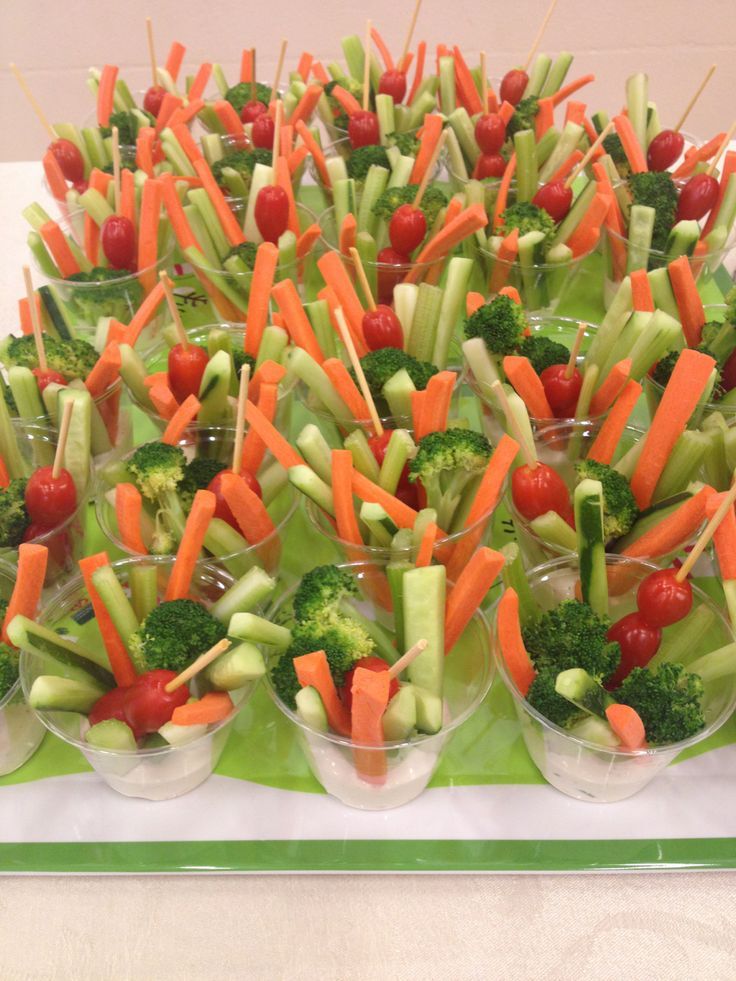
On our site Encyclopedia Baby Food there is useful information on the nutrition of your children, which is useful for everyone, and we update the site "Encyclopedia Baby Food" constantly and try to search and write only excellent, verified and necessary information for you and your children.
Disclaimer No. 1: It must be understood that the author of the articles on the Baby Food Encyclopedia website is not a medical staff, “I am not a doctor.” The information I share is based on my own experience. My goal is not to teach you how to eat or feed your child, but to talk about how we did it, what new things I learned or read. This expands the picture of Baby Food knowledge, gives you a glimpse of the whole process so you can decide if you like it or not.
Disclaimer No. 2 : However, the above does not cancel visiting a pediatrician. Before you start complementary foods, you need to get his professional opinion on the best way to introduce new foods for your baby. I also draw your attention to the fact that you need to look at the original date of the published articles, because some of the "best practices" may have changed. Always check with your child's pediatrician about complementary foods and their health.
I also draw your attention to the fact that you need to look at the original date of the published articles, because some of the "best practices" may have changed. Always check with your child's pediatrician about complementary foods and their health.
Disclaimer #3: Keep in mind that every family is unique, every situation is also completely unique. There are no universal solutions. Only you can find what works best for you. Certain goals require certain sacrifices and priorities - not everyone wants to make that choice, and that's GREAT! Just know what you want to achieve and be ready to get to work, putting the best of your strength!
Disclaimer No. 4: On the Encyclopedia Baby Food website, photos from books on baby food with attribution are used for a more complete understanding of the information (Article 1274, Clause 1, Part Four of the Civil Code of the Russian Federation). Literature on baby food is found in the public domain on the Internet.
Disclaimer No. 5: Content, editing, proofreading, layout, etc. produced ONLY by the author of the site Encyclopedia Baby food. Therefore, I apologize for spelling, punctuation and stylistic errors. If you notice a mistake, please report it, and do not write angry comments about the illiteracy of the author of the article.
Apricot puree with chicken
Banana-apple puree
Banana puree
Borsch
Broth with peas and rice
Baby mashed potatoes with cottage cheese and fruits
Home yeast bread with linen flour
Home cheese
Home pizza
Breakfast on the street
Opemen from kolrabi
Baked carrots
Baked carrots and cherries with a prose of
1 white beans
Cabbage salad
Mashed potatoes
Quinoa and pumpkin porridge
Quinoa porridge
Breakfast cereals
Quinoa and apple
Strawberry puree
Strawberry puree with banana
Strawberry compote
Compote of wild apples and raspberries
Compote of dried fruits steamed in a thermos for a baby over 8 months old
Corn porridge
Corn porridge with pear
Corn porridge9 with pumpkin
Corn porridge with pumpkin and walrus Corn porridge with apple and carrots
Chicken liver in the oven
Chicken cutlets with carrots
Chicken with carrots, sweet peppers and potatoes
Navy pasta
Pasta with orange sauce
Pasta with Gremolata
Muffins with vegetables and egg
New potatoes in their skins
Vermicelli milk soup
Carrot and potato puree
Carrot and rice casserole
Carrot with chicken
Fly agaric from eggs and tomatoes children
Cauliflower and carrot vegetable puree
Vegetable soup with corn semolina
Vegetable soup with cheese and corn semolina
Vegetable soup with spinach
Vegetable puree soup with bell pepper
Oatmeal porridge
pancakes from polions
pancakes on hot kefir
omelet in a package
omelet with broccoli and colored cabbage
Overlet with spinach and cheese
Omlet pile
pier 7 months +
pickers
Rice and zucchini pie
Fish pie
Fish and potato pie
White cabbage pizza
Lavash pizza
Zucchini, tomato and sausage pizza
Tomato and olive pizza
Spinach pizza
Rabbit pilaf
Chicken pilaf with green peas and corn
Banana and cherry puree
Banana, cottage cheese and porridge puree 4 grains
Broccoli (cauliflower) puree
Broccoli, squash and cauliflower puree
Blueberry puree
Pear puree
Pear and banana puree
Pear and banana puree, baked
Pear and pumpkin puree 7 months +
Pear, pumpkin and peach puree
Pear, apple, plum and prunes puree
Blackberry puree
Turkey puree
Zucchini puree
Zucchini and broccoli puree
Zucchini, carrot and potato puree
Quinoa and banana puree
Quinoa and carrot puree
Quinoa, banana and carrot puree1
Quinoa, peach and raspberry puree
Quinoa, cauliflower, apple, pea and mint puree
Quinoa, apple, pear and raisin puree
Quinoa, apple, carrot puree
Rabbit, broccoli and mint puree cauliflower
Chicken, carrot, potato, apple and pea puree
Raspberry, cherry and banana puree
Carrot puree
Carrot and apple puree
Carrot, potato, broccoli puree with cheese
Carrot, potato, apple and quinoa puree
Carrot, pumpkin, apple and prunes puree
Carrot, apple and potato puree
Turnip and carrot puree
Plum puree
Cottage cheese, strawberry and banana puree
Pumpkin puree
Pumpkin and banana puree
and zucchini
Pumpkin and apple puree
Pumpkin, apple and banana puree
Cauliflower and broccoli puree
Cauliflower and potato puree
Cauliflower and rice puree
Cauliflower and apple puree
Cauliflower and green pea puree and squash
Cauliflower, turkey and potato puree
Cauliflower, potato and squash puree
Cauliflower, carrot and broccoli puree
Cauliflower, carrot, cheese and rice puree
Cauliflower, apple and squash puree
Zucchini puree
Zucchini and potato puree
Zucchini, carrot and apple puree
Cherry puree
Blueberry puree
Prune puree
Apple, pumpkin, carrot and some curry puree
toy apple puree apple and strawberry puree
Apple, strawberry and cherry puree
Apple, peach and banana puree
Carrot and pumpkin puree
Cottage cheese and banana puree
Turkey, potato and carrot stew
Zucchini, carrot and broccoli stew
Fish, potato, carrot and broccoli stew
Rice porridge
Whole grain rice porridge
Carrot rice porridge
Pumpkin rice porridge
Apple and rice porridge
Apple and pear rice porridge
Apple and pumpkin rice porridge1 cutlets with vegetables
Ready-to-cook fish
Fish meatballs with ketchup
Fish soup for children
Fish soup with salmon and celery
Carrot and kohlrabi salad
Chickpea salad
Chickpea and cabbage salad
Laziest Soup
Creamy Kohlrabi Soup
Oatmeal Smoothie
Pot Sauce
Cheese Pizza Sauce
Pea and Bacon Soup
Roasted Vegetable Soup
Kohlrabi Soup
Cauliflower Soup
Salmon Soup
with potatoes and turnips
Meatball soup for the picky eater
Kohlrabi puree soup with green apple
Rabbit, pumpkin, potato, broccoli and cauliflower soup
Beetroot puree
Pumpkin puree with mushrooms
Celery and Broccoli Soup
Pork Potato and Carrot Soup/Stew
Cheese Chebureks
Pumpkin Cheese Sauce (Annabelle Carmel Recipe)
Buzz Lightyear Sandwich
Pumpkin-Apple Puree
Pumpkin-Apple Juice
Pumpkin-Apple Juice
Pumpkin-Apple Juice
puree soup
Fruit salad
Mango fruit salad
Lavash bread
Cauliflower with cheese
Linden and thyme tea
Experimental vermicelli and lentil soup puree
Apple puree
Apple juice
Rules of finger food - Encyclopedia Baby food
Levchuk Victoria©rules of finger food
Levchuk Victoria© What is finger food, I wrote in previous articles, therefore, today I want to write the rules of finger food.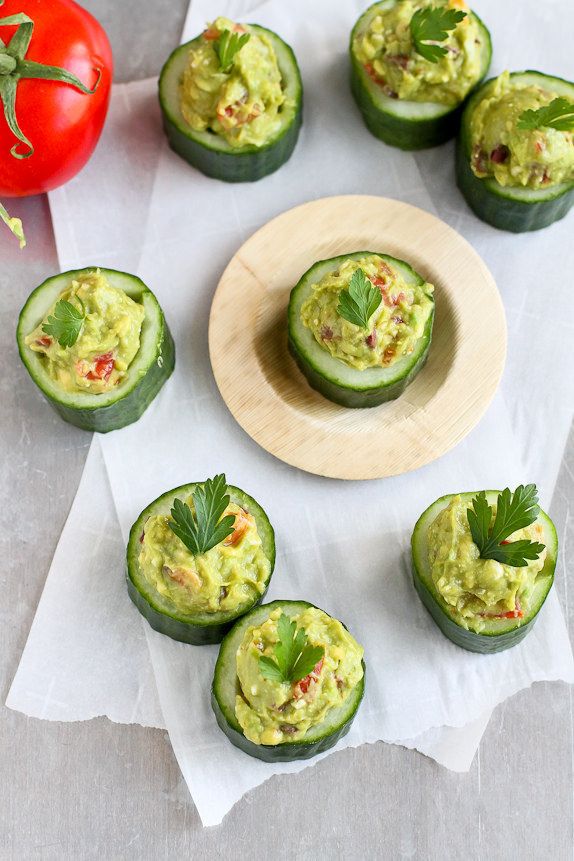 Below are the main rules to follow:
Below are the main rules to follow:
1. The most important rule of finger food is the presence of an adult when the baby eats lumps of food. Since, especially at first, the baby can choke on food that is unusual for him, therefore, the following rule follows from this.
2. Know how to treat choking if it occurs. It may never happen over the entire period of eating finger food, but knowledge is never enough, especially if you have a baby in your arms.
3. The very first finger foods are light, soft foods that quickly dissolve in the mouth and are introduced into a child's diet.
Chicken fillet, cucumber, broccoli, apple, black bread Borodinsky, children's cottage cheese as a sauce4. Finger food should be bright to interest the baby to eat it.
5. Finger food should be beautifully shaped so that the baby does not lose interest, looking at, crushing, studying the texture and shape. In this case, baby food acts as a visual aid for the baby, he studies the world around him with the help of food.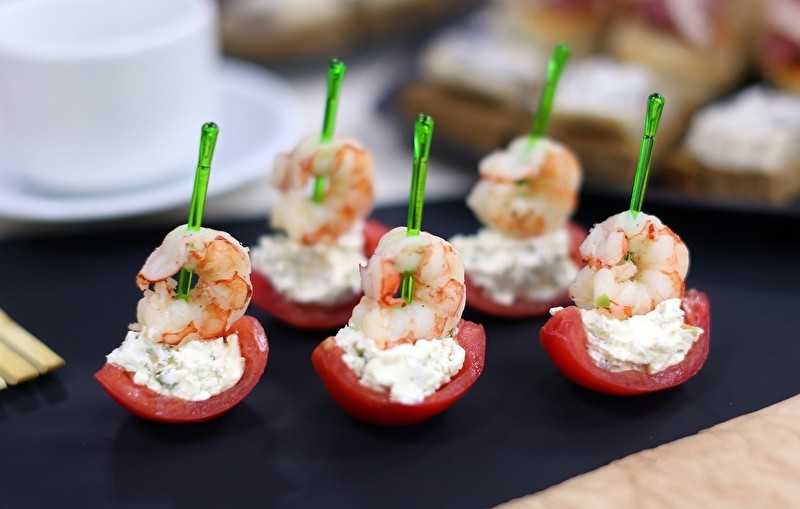
6. A portion of finger food should be small, the pieces should be small, but such that the baby can pick them up with his fingers (by the way, this is the first finger gymnastics that the baby will definitely like, because almost everyone loves to eat).
finger food Click on me!!!7. Never use food with a hard texture, too sticky, and foods that should not be consumed by children under one year of age and that the child may choke on and suffocate, such as chips, lollipops, nuts, etc., for finger food.
finger food Click on me!!!8. Finger food should be rich in calories, fat, carbohydrates, protein, nutritious and wholesome food.
9. Finger food is messy but fun. Therefore, do not be upset if the baby is completely covered with food. This is a temporary learning period that will end very quickly. Grab a camera and take great pictures.
These are probably the basic rules of finger food.
We are not afraid and add me to VK and Odnoklassniki, Instagram!
Like this article? Subscribe to site updates
"Encyclopedia Baby Food"!
Don't forget to bookmark us! (CTRL+SHIFT+D) Subscribe to the site, comment, share in social networks.

Our site Encyclopedia Baby Food has useful information on the nutrition of your children, which is useful for everyone, and we update the site "Encyclopedia Baby Food" constantly and try to search and write only excellent, verified and necessary information for you and your children.
Disclaimer No. 1: It must be understood that the author of the articles on the Baby Food Encyclopedia website is not a medical staff, “I am not a doctor.” The information I share is based on my own experience. My goal is not to teach you how to eat or feed your child, but to talk about how we did it, what new things I learned or read. This expands the picture of Baby Food knowledge, gives you a glimpse of the whole process so you can decide if you like it or not.
Disclaimer No. 2 : However, the above does not cancel visiting a pediatrician. Before you start complementary foods, you need to get his professional opinion on the best way to introduce new foods for your baby.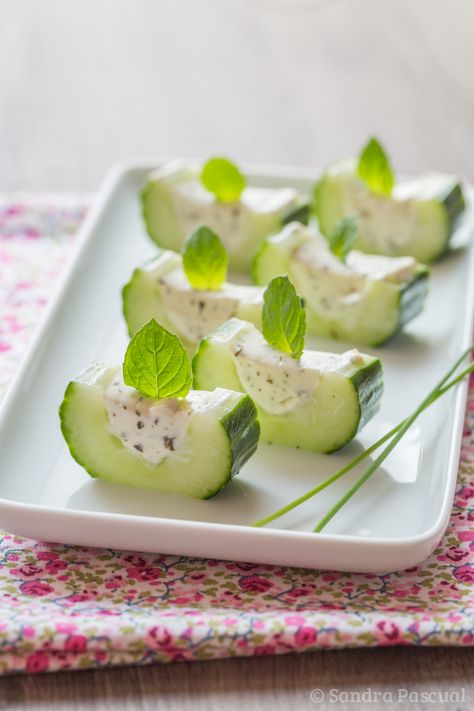 I also draw your attention to the fact that you need to look at the original date of the published articles, because some of the "best practices" may have changed. Always check with your child's pediatrician about complementary foods and their health.
I also draw your attention to the fact that you need to look at the original date of the published articles, because some of the "best practices" may have changed. Always check with your child's pediatrician about complementary foods and their health.
Disclaimer #3: Keep in mind that every family is unique, every situation is also completely unique. There are no universal solutions. Only you can find what works best for you. Certain goals require certain sacrifices and priorities - not everyone wants to make those choices, and that's GREAT! Just know what you want to achieve and be ready to get to work, putting the best of your strength!
Disclaimer No. 4: On the Encyclopedia Baby Food website, photos from books on baby food with attribution are used for a more complete understanding of the information (Article 1274, Clause 1, Part Four of the Civil Code of the Russian Federation). Literature on baby food is found in the public domain on the Internet.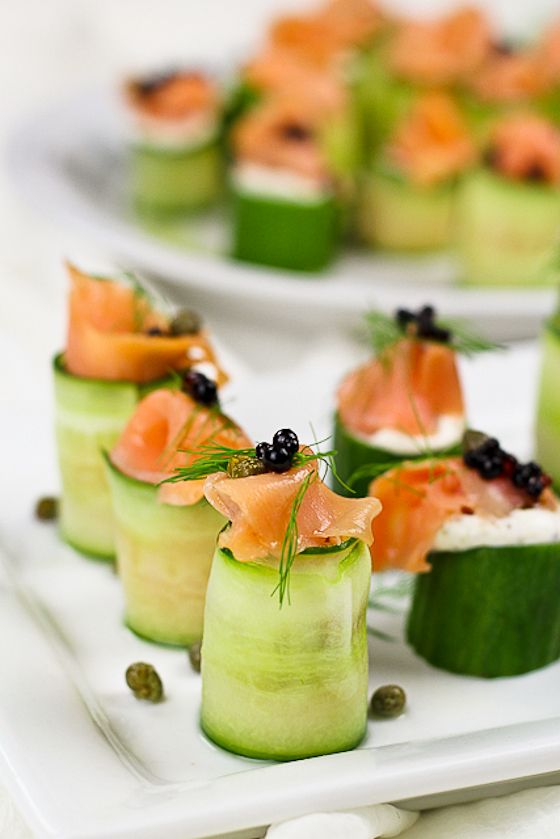
Apricot puree with chicken
Banan-global puree
Banana puree
borsch
broth with peas and rice
11 Boturbrod
Quick dessert
Buckwheat porridge with apricots
Buckwheat porridge with banana
Buckwheat pilaf
Children's sausage
Children's milk porridge with banana
Children's vinaigrette
Children's ketchup
Children's cucumber salad
Children's salad Olivier
Children's porridge biscuits
Children's puree of strawberries, bananas, yellow cherries, yoghurt and biscuits with cereals
Children's puree with cottage cheese and fruit
Homemade yeast bread with flax flour
Homemade cheese
Homemade pizza
Breakfast1 outside Kohlrabi appetizer
Roasted cauliflower
Roasted carrots
Roasted carrots and cherries with millet
Winter salad with Jerusalem artichoke
Cabbage with white beans
Cabbage salad like in a canteen
Mashed potatoes
Quinoa and pumpkin porridge
Quinoa porridge
breakfast porridge
Quinoa and apple
Strawberry puree
Strawberry puree with banana
Strawberry compote
Wild apple and raspberry compote 8 months
Corn porridge
Corn porridge with pear
Corn porridge with pumpkin
Corn porridge with pumpkin and carrots
Corn porridge with apple and carrots
Chicken liver in the oven
Chicken cutlets with carrots
Chicken with carrots, sweet peppers and potatoes
Naval pasta
Macaroni with orange sauce
Gremolata pasta
Muffins with vegetables and egg
Jacket potatoes
1 Vermicelli milk soup1 Carrot puree
Carrot-rice casserole
Carrots with chicken
Fly agaric from eggs and tomatoes
Meat envelopes
Homemade Tarragon drink for children
Vegetable puree from cauliflower and carrots
Vegetable soup with corn semolina
Vegetable soup with cheese and corn semolina
Vegetable soup with spinach
Vegetable puree soup with bell pepper
Oatmeal porridge
Pollock fritters
Hot yogurt fritters
Omelet in a bag
Spinach and Cheese Omelette
Omelette Pancake
Peach Puree
Baked Apples 7 months +
Zucchini and Carrot Pie
Zucchini Pie
Rice and Zucchini Pie
Fish Pie
Fish and potato pie
White cabbage pizza
Lavash pizza
Zucchini, tomato and sausage pizza
Tomato and olive pizza
Spinach pizza
Rabbit pilaf
Chicken pilaf with green peas and 1 banana Puree 9011 and cherries
Banana, cottage cheese and porridge puree 4 cereals
Broccoli (cauliflower) puree
Broccoli, courgette and cauliflower puree
Blueberry puree
Pear puree
Pear and banana puree
Pear and banana puree, baked
Pear and pumpkin puree 7 months +
Pear, pumpkin and peach puree
Pear, apple, plum and prunes puree
Blackberry puree
Turkey puree
Zucchini puree 90 zucchini and broccoli
Zucchini, carrot and potato puree
Quinoa and banana puree
Quinoa and carrot puree
Quinoa, banana and carrot puree
Quinoa, squash and carrot puree
Quinoa, peach and raspberry puree
quinoa, cauliflower, apple, peas and mint
Quinoa, apple, pear and raisin puree
Quinoa, apple, carrot puree
Rabbit, broccoli and cauliflower puree
Chicken, carrot, potato, apple and pea puree
Raspberry, cherry and banana puree
Carrot and Apple Puree
Carrot, Potato, Broccoli and Cheese Puree
Carrot, Potato, Apple and Quinoa Puree
Carrot, Pumpkin, Apple and Prune Puree
Carrot, Apple and Potato Puree
Turnip and carrots
Plum puree
Cottage cheese, strawberry and banana puree
Pumpkin puree
Pumpkin and banana puree
Pumpkin and squash puree
Pumpkin and apple puree
Pumpkin, apple and banana puree
Cauliflower and broccoli puree
Cauliflower puree and potatoes
Cauliflower and rice puree
Cauliflower and apple puree
Cauliflower, green peas and marrow puree
Cauliflower, turkey and potato puree
Cauliflower, potato and marrow puree
Cauliflower, Carrot and Broccoli Puree
Cauliflower, Carrot, Cheese and Rice Puree
Cauliflower, Apple and Squash Puree
Zucchini Puree
Zucchini and Potato Puree
Zucchini, Carrot and Apple Puree 90 cherries
Blueberry puree
Prune puree
Apple, pumpkin, carrot and some curry puree
Apple and pear puree
Apple and strawberry puree
Apple, strawberry and cherry puree
Apple, peach and banana puree
Carrot and pumpkin puree
Cottage cheese and banana puree
Turkey, potato and carrot stew
Zucchini, carrot and broccoli stew
Fish, potato, carrot and broccoli stew
Rice porridge
Whole grain rice porridge
carrot
Rice porridge with pumpkin
Rice porridge with apples
Rice porridge with apple and pear
Rice porridge with apple and pumpkin
Fish cakes with vegetables
Semi-cooked fish
Fish meatballs with ketchup
Baby Fish Soup
Salmon and Celery Fish Soup
Carrot and Kohlrabi Salad
Chickpea Salad
Chickpea and Cabbage Salad
The Laziest Soup
Creamy Kohlrabi Soup
Oatmeal Smoothie190 Sauce
Cheesy Pizza
Pea and Bacon Soup
Baked Vegetable Soup
Kohlrabi Soup
Salmon Soup
Cauliflower Soup
Turnip Potato Soup
Meatball Soup for the Picky Eater
Green apple kohlrabi soup
Rabbit, pumpkin, potato, broccoli and cauliflower soup
Beetroot soup
Pumpkin mushroom soup
Broccoli and celery soup
Soup/stew Pork with Potatoes and Carrots
Cheburek Chebureks
Pumpkin Cheese Sauce (Annabelle Carmel Recipe)
Buzz Lightyear Sandwich
Pumpkin Apple Puree
Pumpkin Apple Juice
Pumpkin Cake
Pumpkin Soup 9 Puree
Fruit Salad
Cauliflower with cheese
Linden tea and thyme
Experimental noodle soup with lentils
Apple puree
Apple juice
Like this article? Subscribe to site updates
"Encyclopedia Baby Food"!
Don't forget to bookmark us! (CTRL+SHIFT+D) Subscribe to the site, comment, share in social networks.
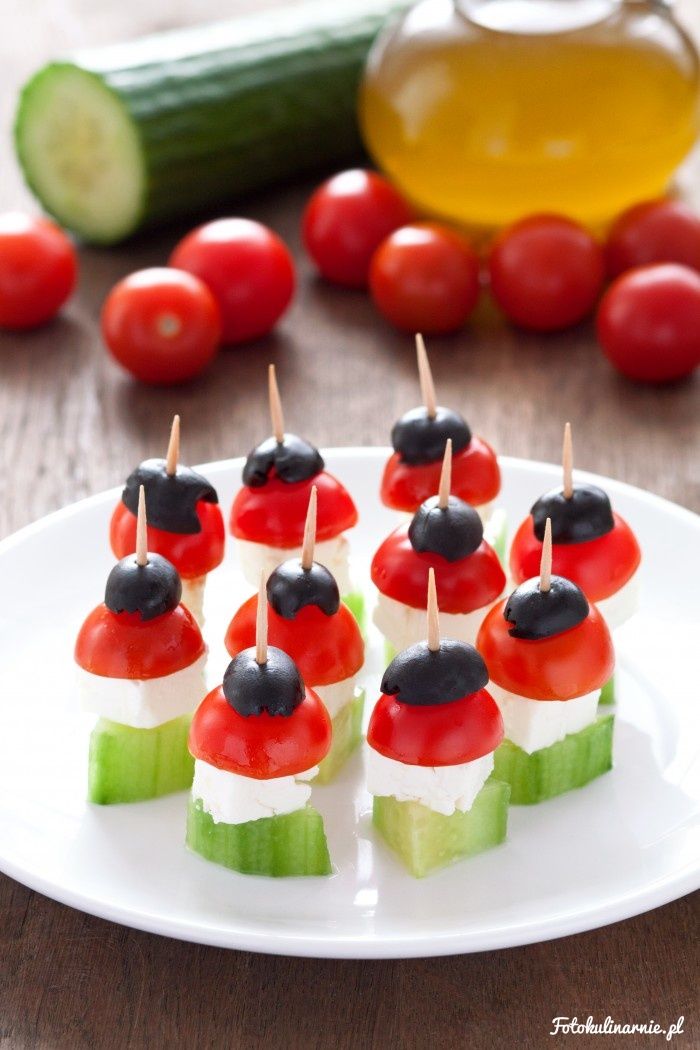
On our site Encyclopedia Baby Food there is useful information on the nutrition of your children, which is useful for everyone, and we update the site "Encyclopedia Baby Food" constantly and try to search and write only excellent, verified and necessary information for you and your children.
Disclaimer No. 1: It must be understood that the author of the articles on the Baby Food Encyclopedia website is not a medical staff, “I am not a doctor.” The information I share is based on my own experience. My goal is not to teach you how to eat or feed your child, but to talk about how we did it, what new things I learned or read. This expands the picture of Baby Food knowledge, gives you a glimpse of the whole process so you can decide if you like it or not.
Disclaimer No. 2 : However, the above does not cancel visiting a pediatrician. Before you start complementary foods, you need to get his professional opinion on the best way to introduce new foods for your baby.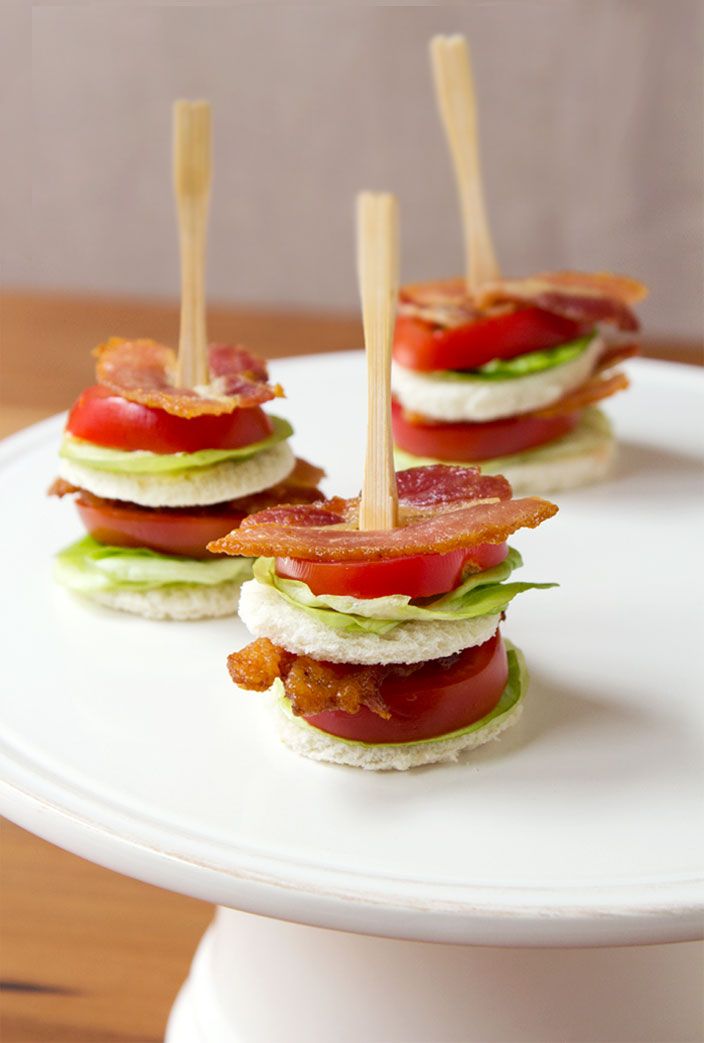 I also draw your attention to the fact that you need to look at the original date of the published articles, because some of the "best practices" may have changed. Always check with your child's pediatrician about complementary foods and their health.
I also draw your attention to the fact that you need to look at the original date of the published articles, because some of the "best practices" may have changed. Always check with your child's pediatrician about complementary foods and their health.
Disclaimer #3: Keep in mind that every family is unique, every situation is also completely unique. There are no universal solutions. Only you can find what works best for you. Certain goals require certain sacrifices and priorities - not everyone wants to make that choice, and that's GREAT! Just know what you want to achieve and be ready to get to work, putting the best of your strength!
Disclaimer No. 4: On the Encyclopedia Baby Food website, photos from books on baby food with attribution are used for a more complete understanding of the information (Article 1274, Clause 1, Part Four of the Civil Code of the Russian Federation). Literature on baby food is found in the public domain on the Internet.